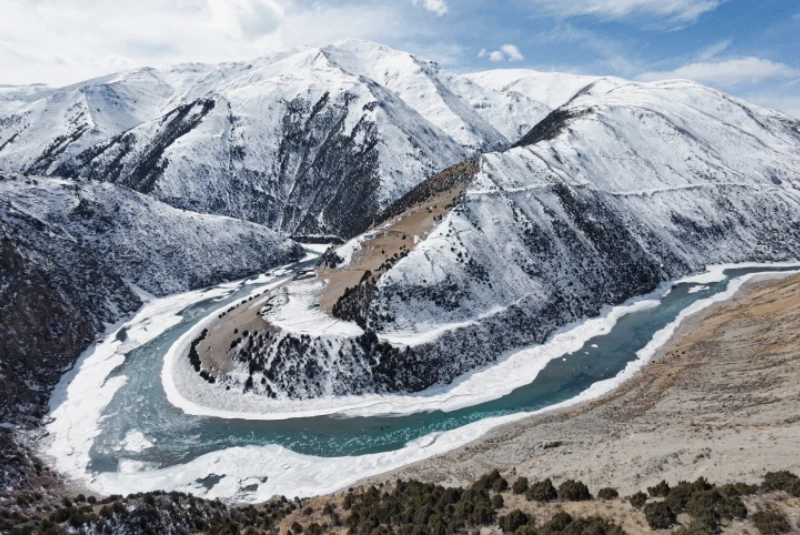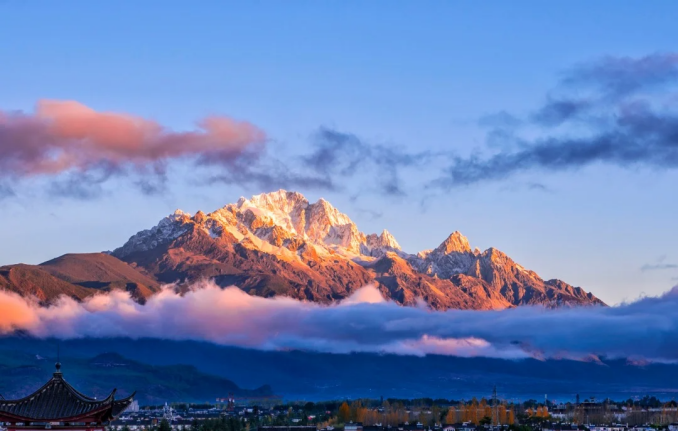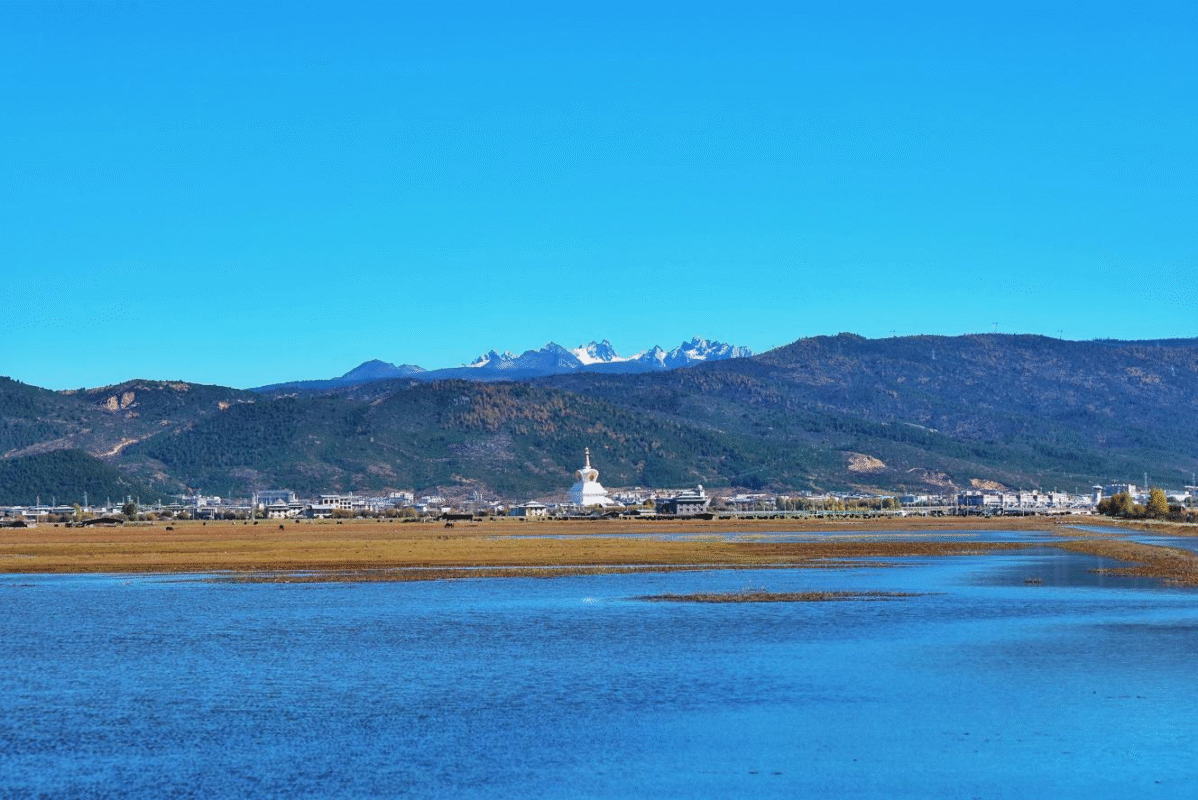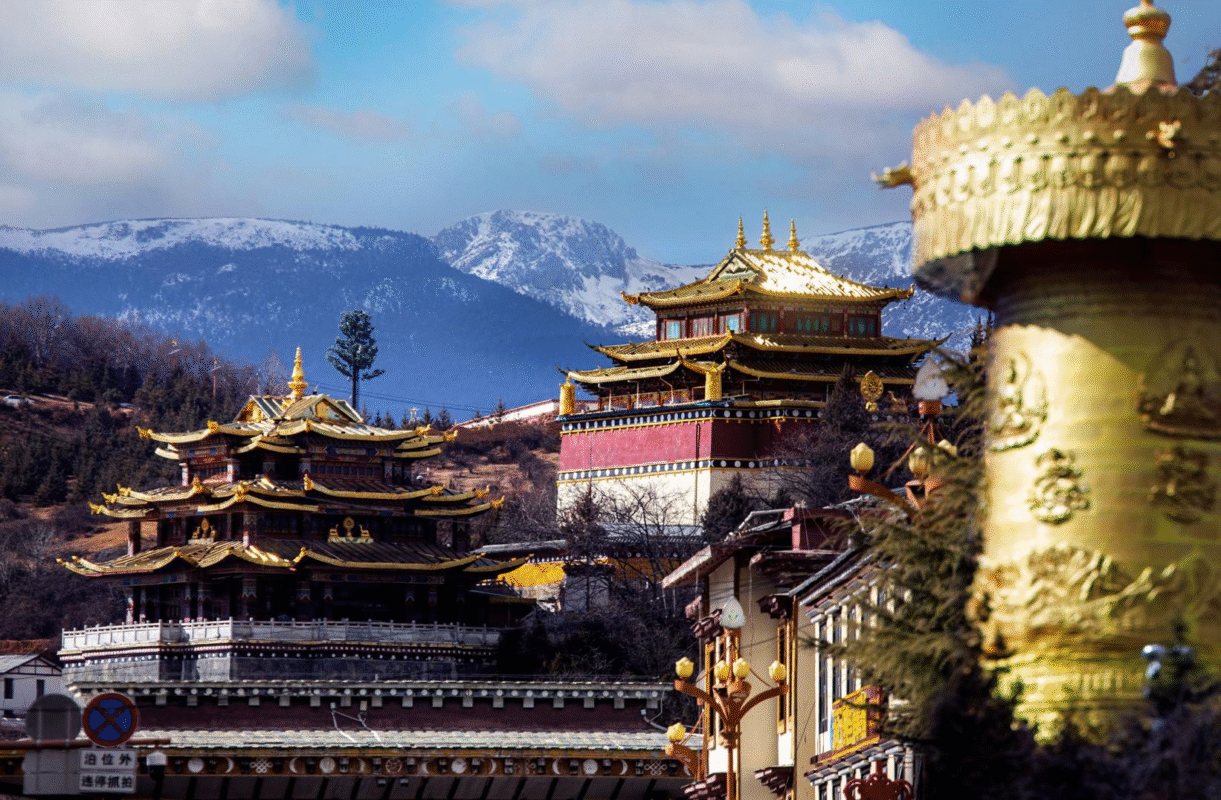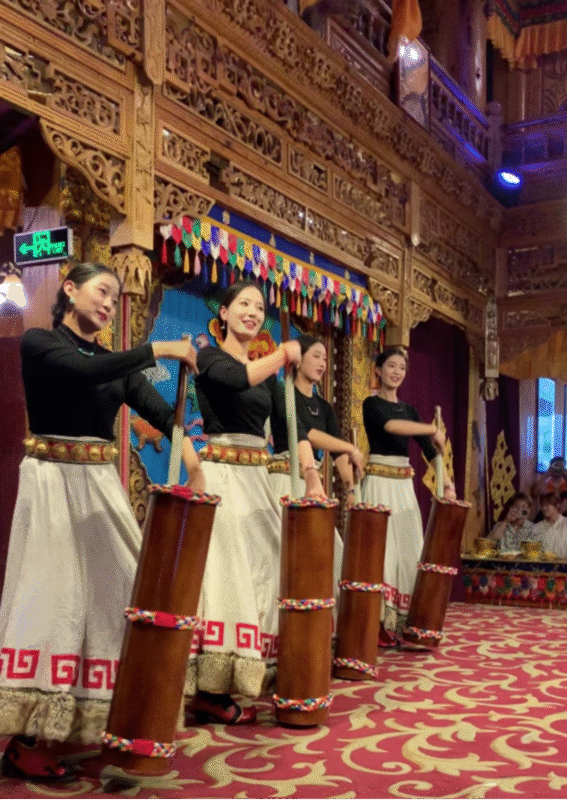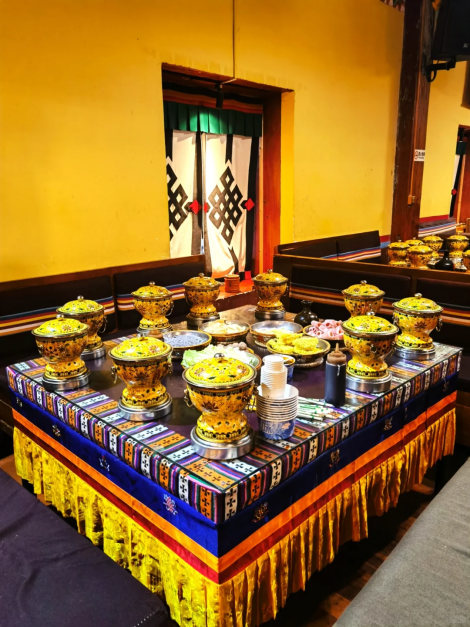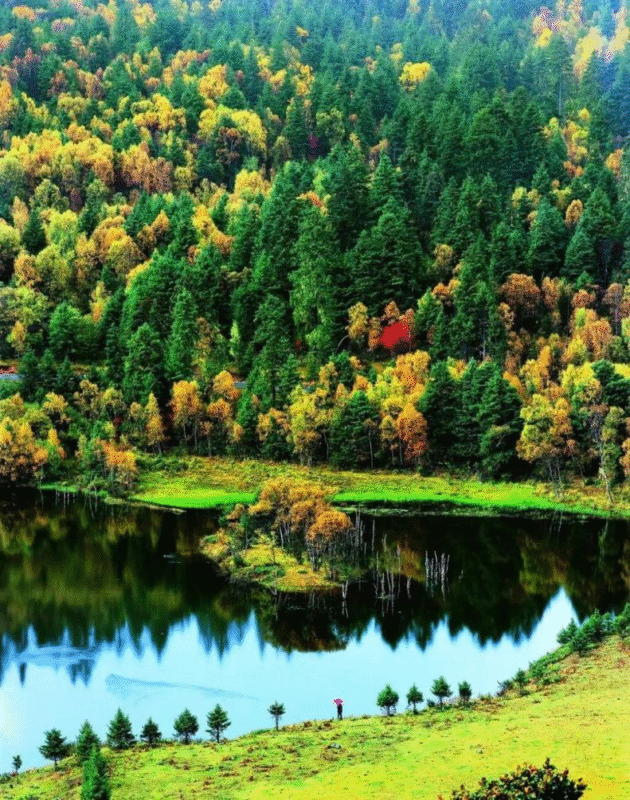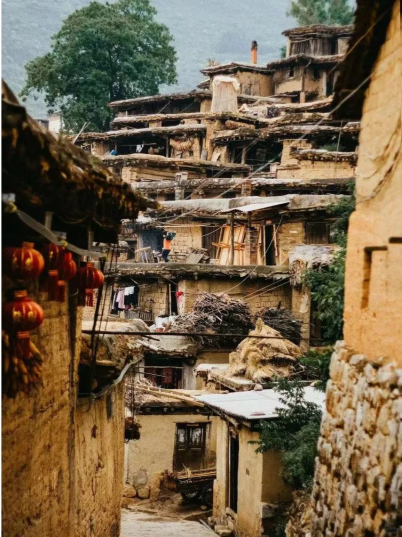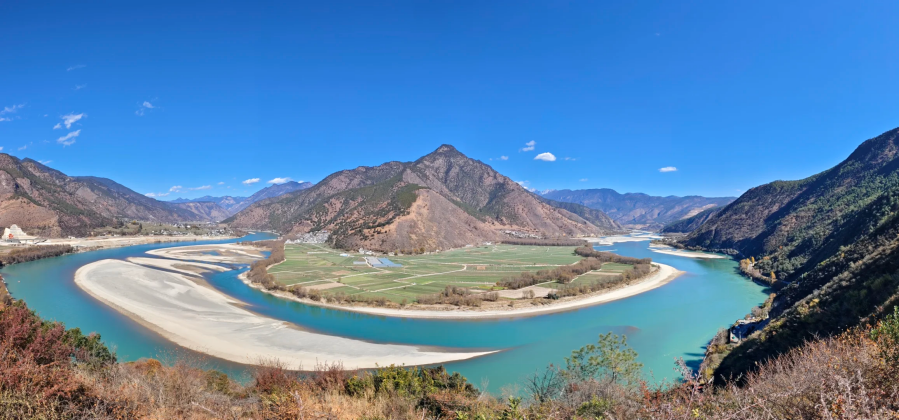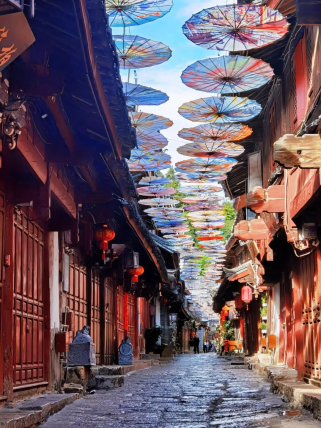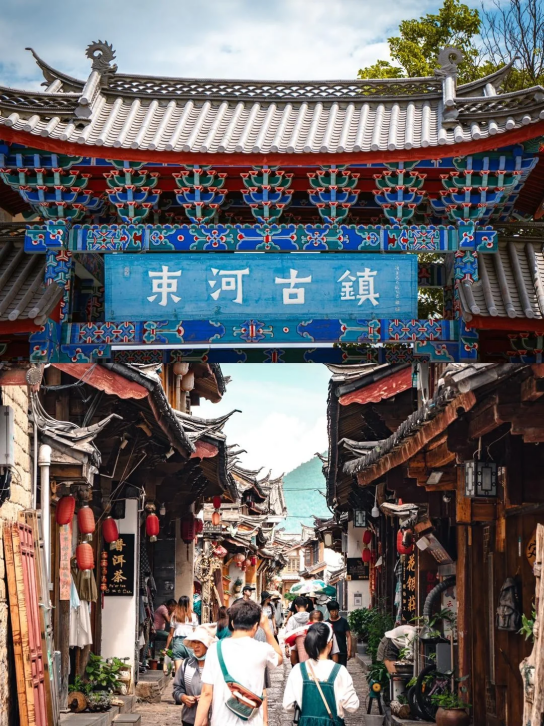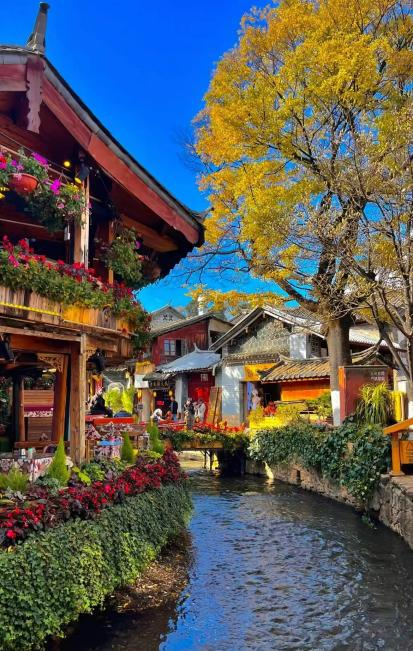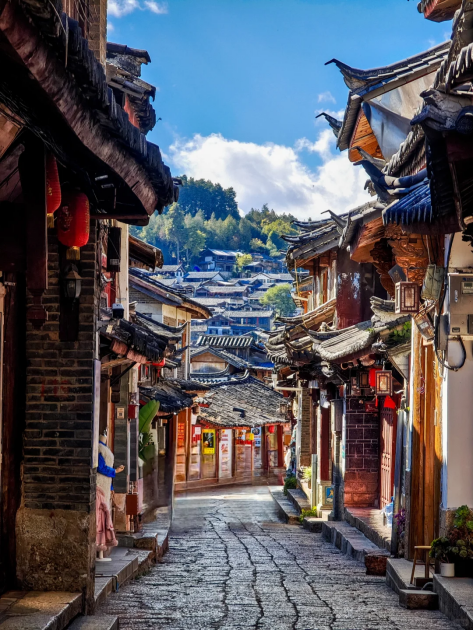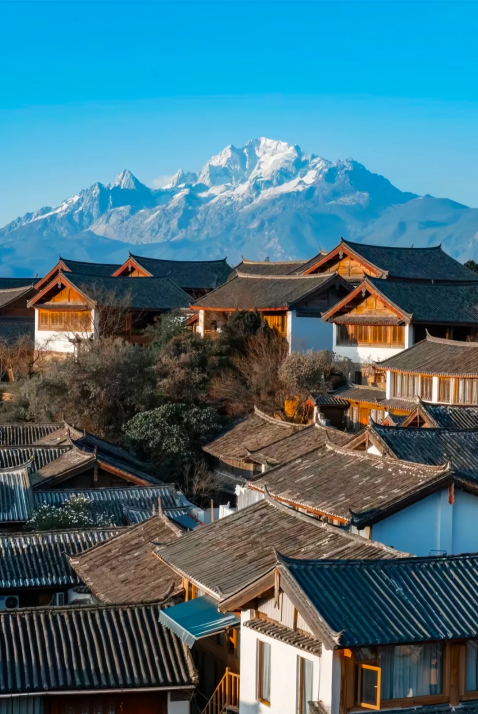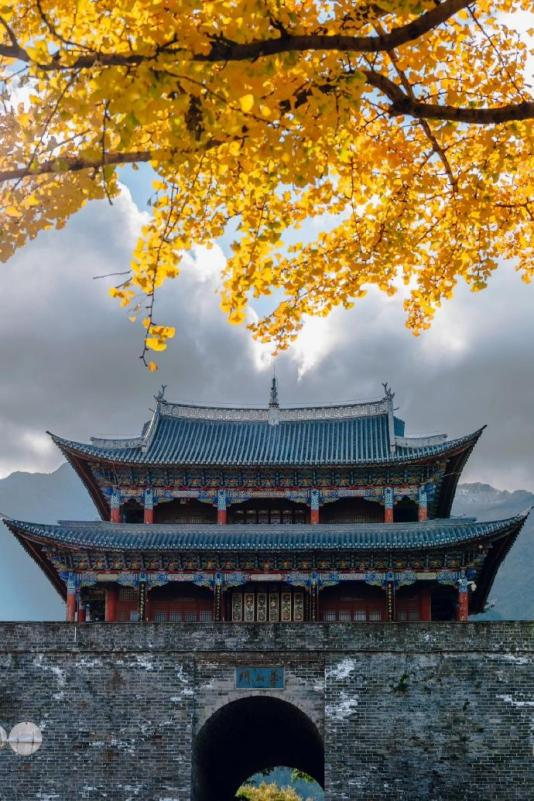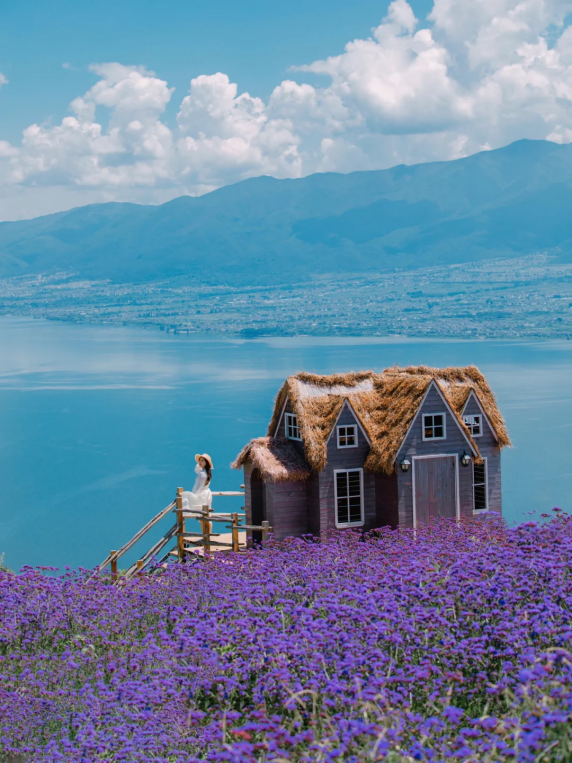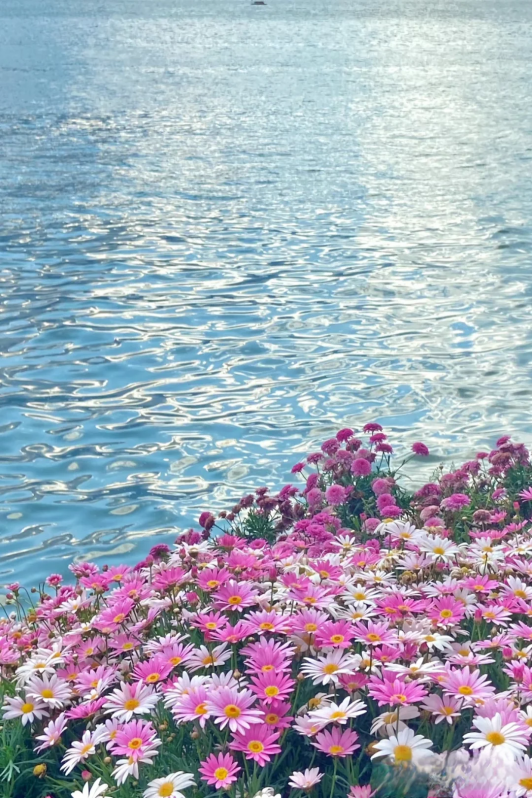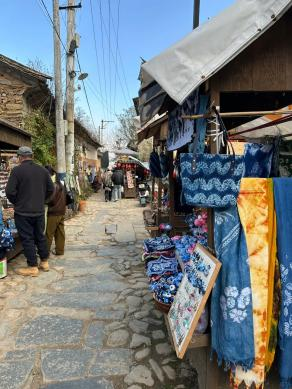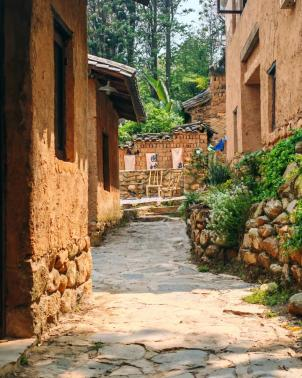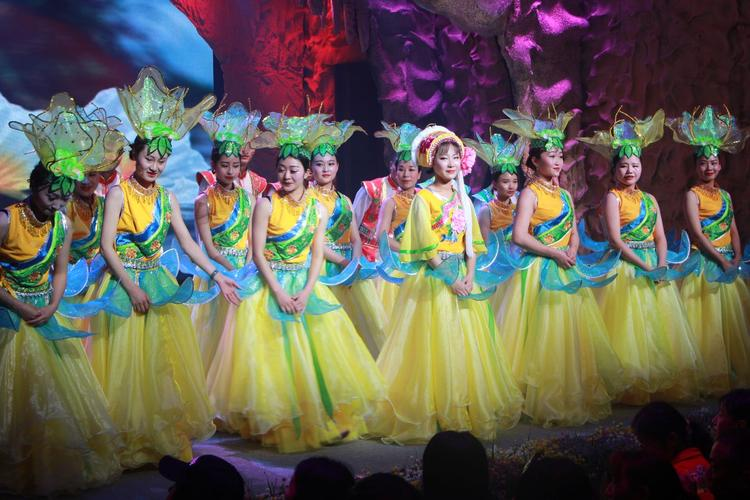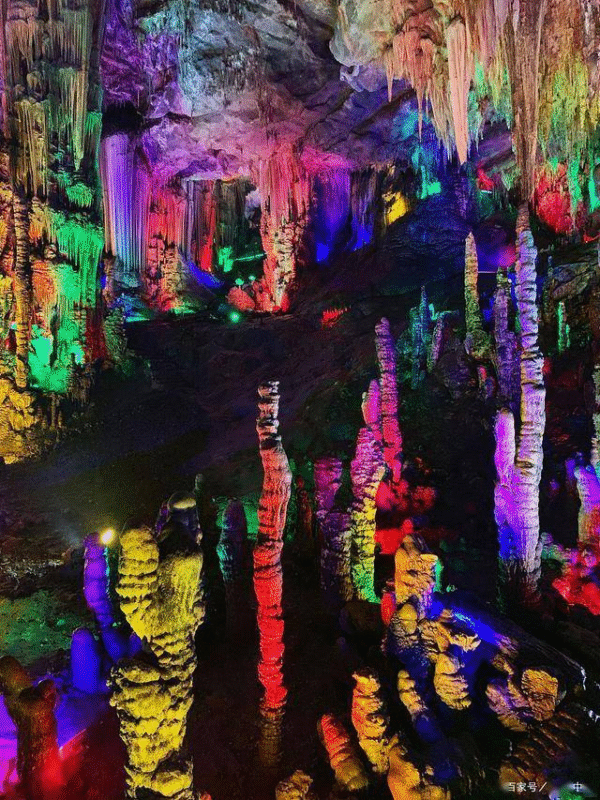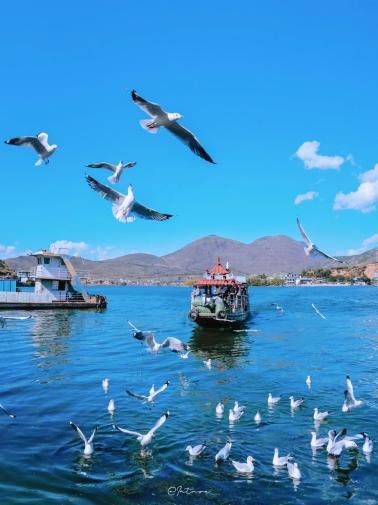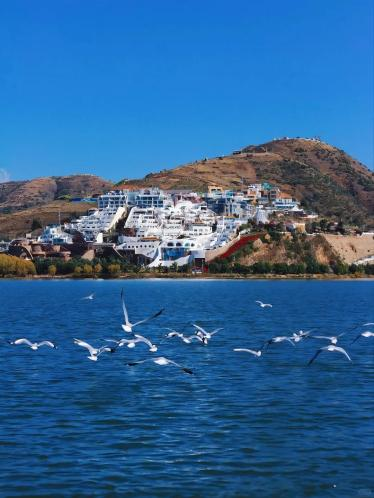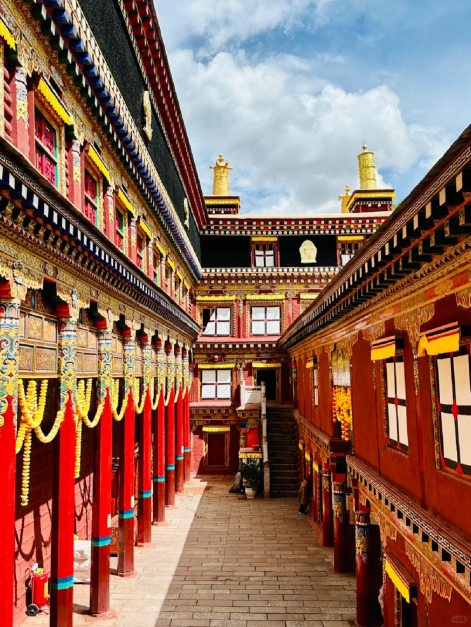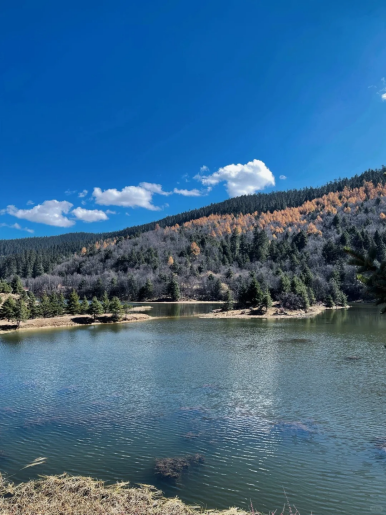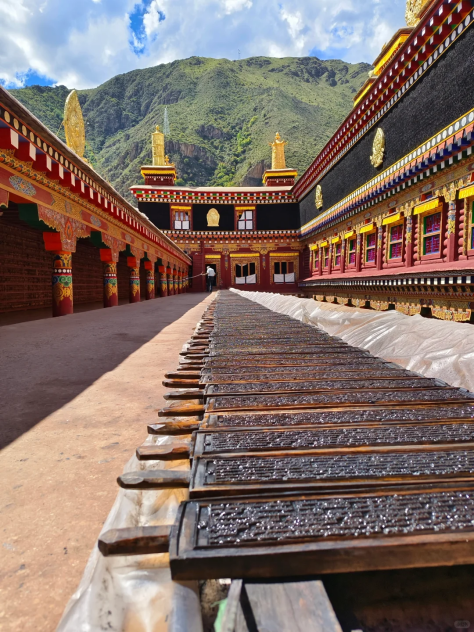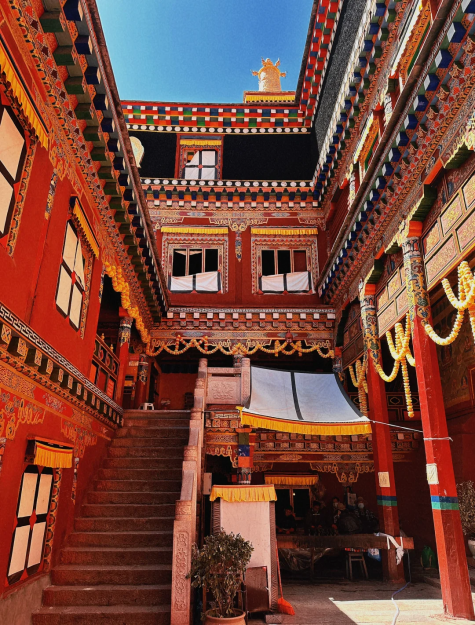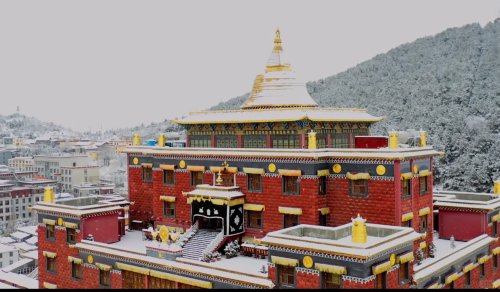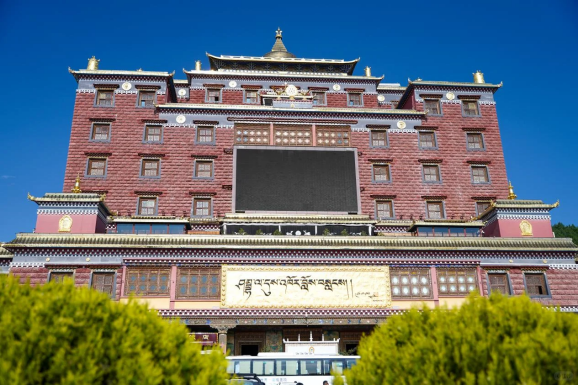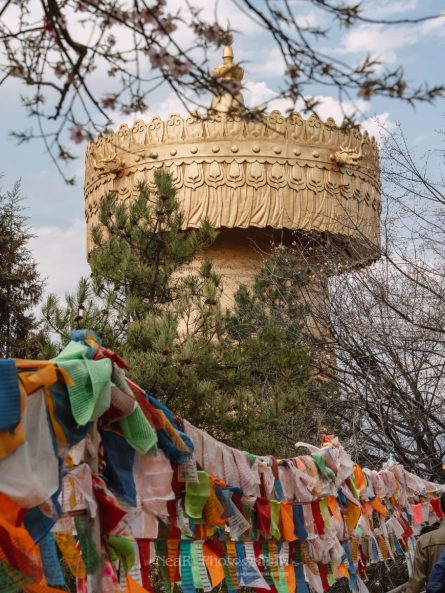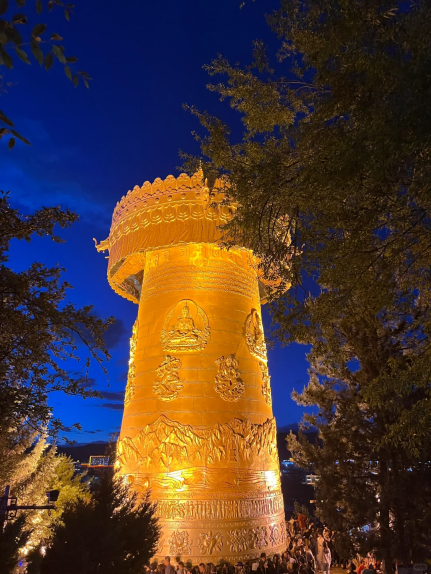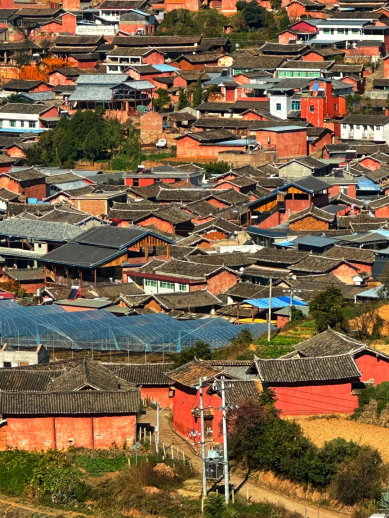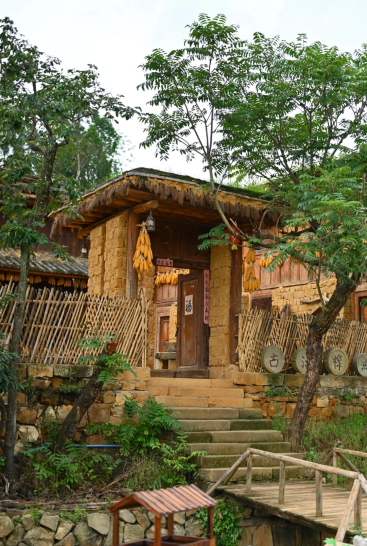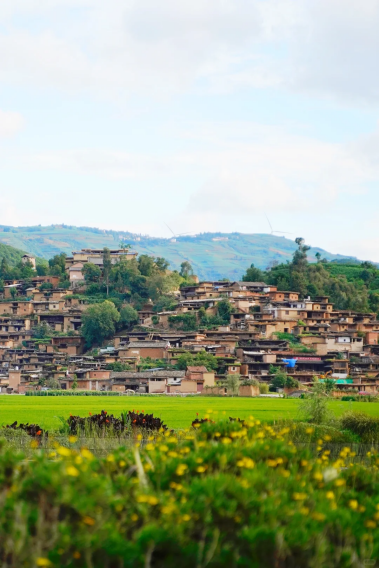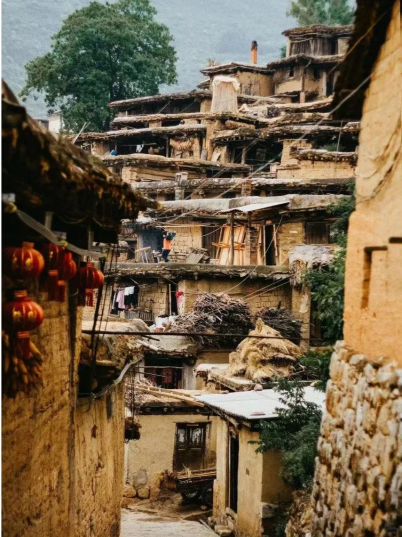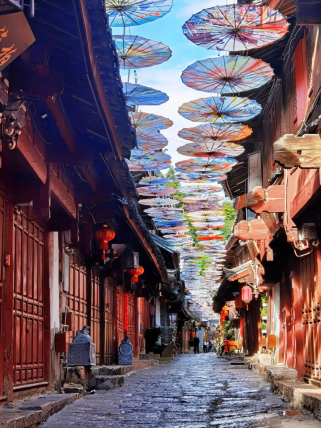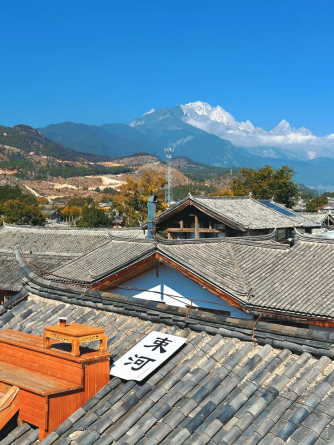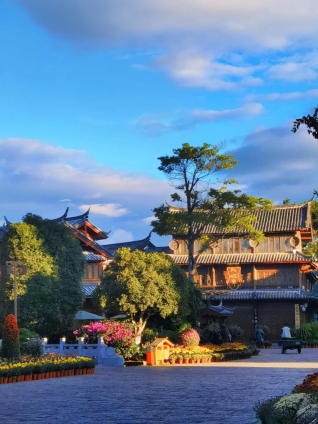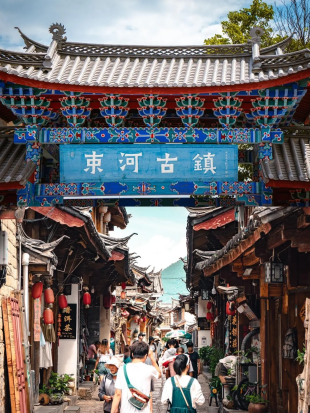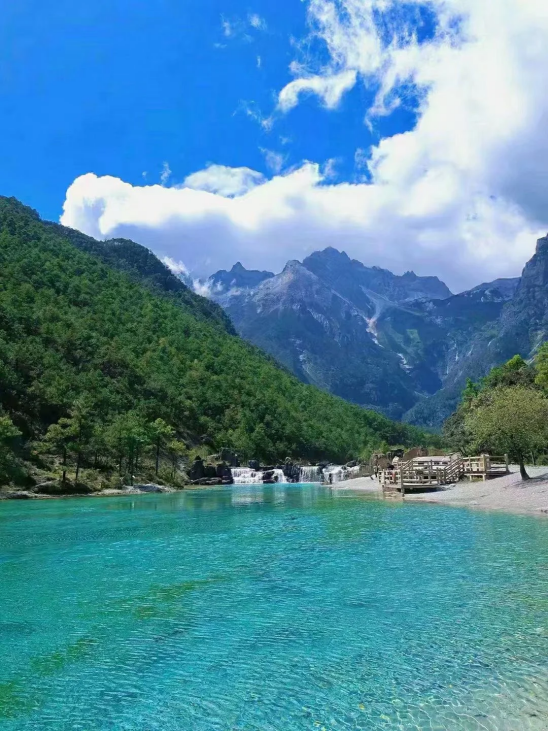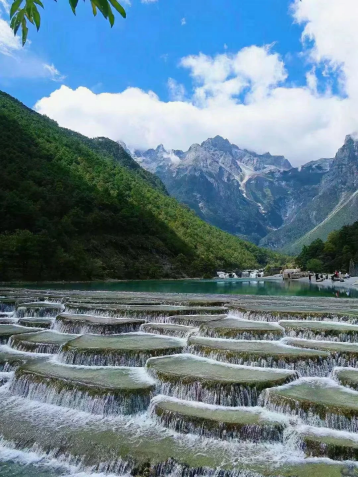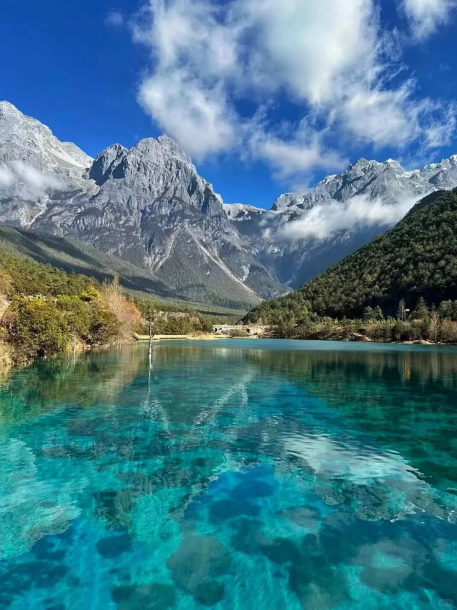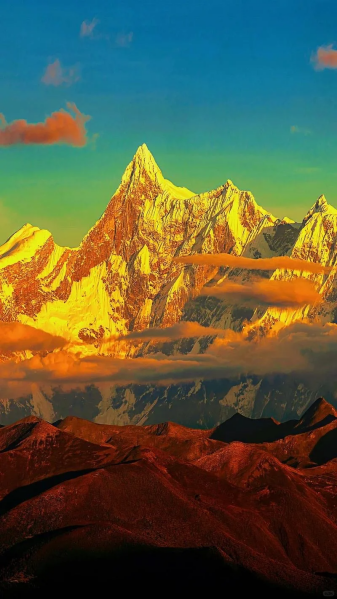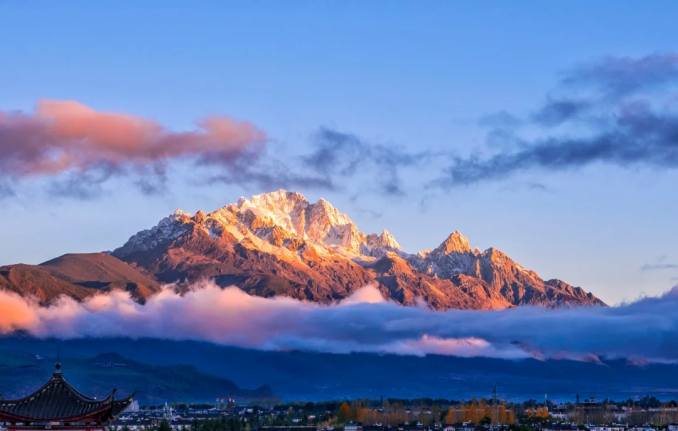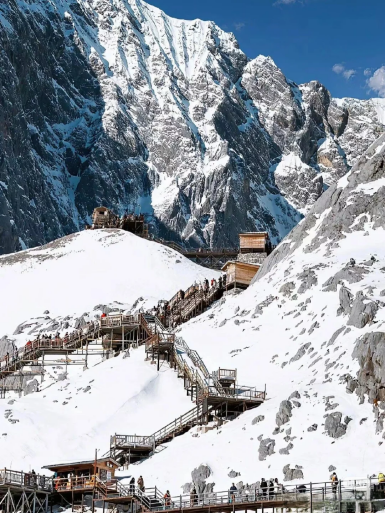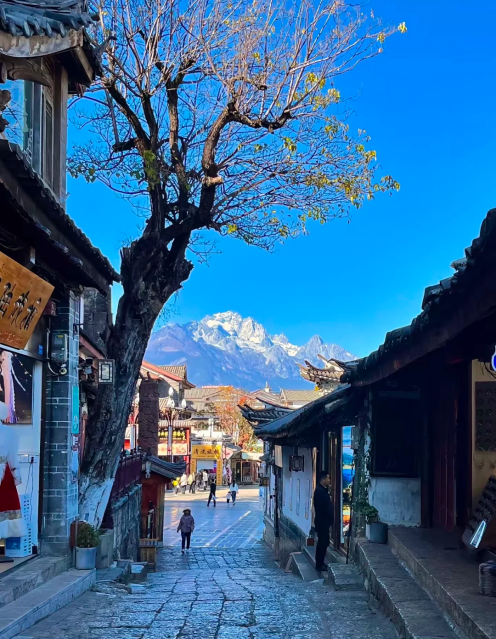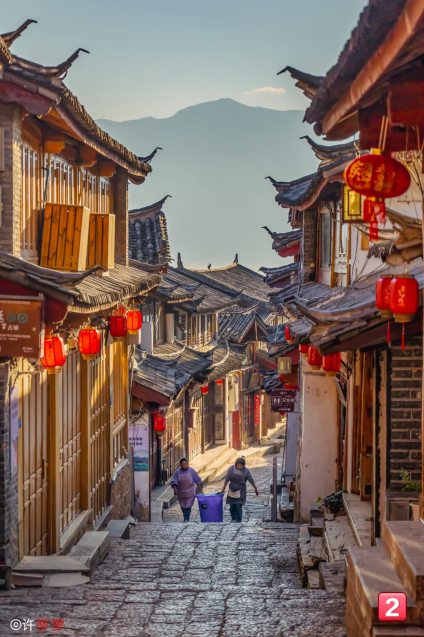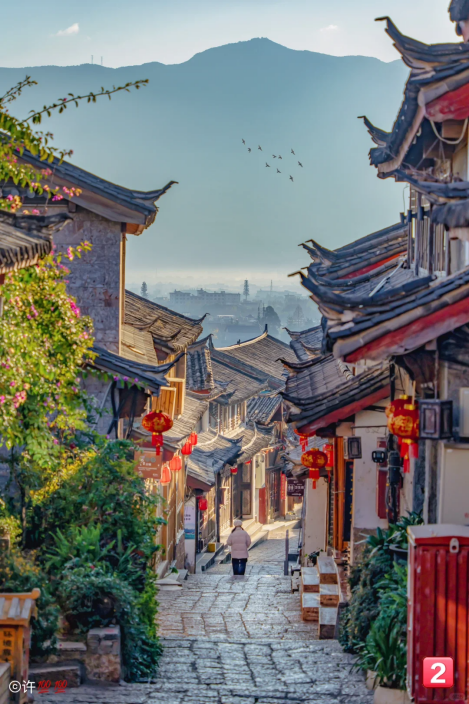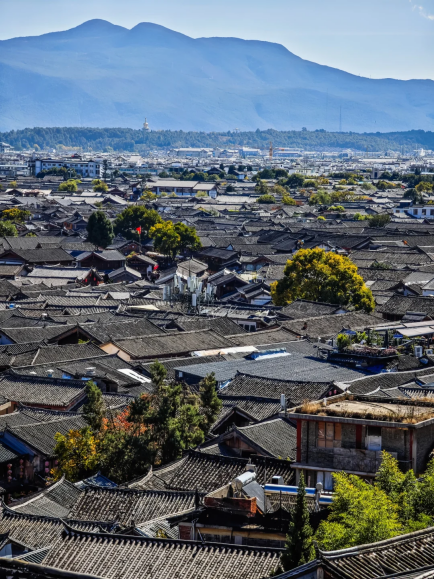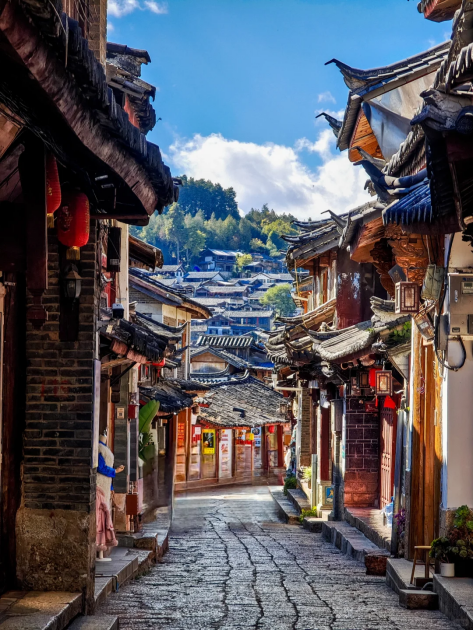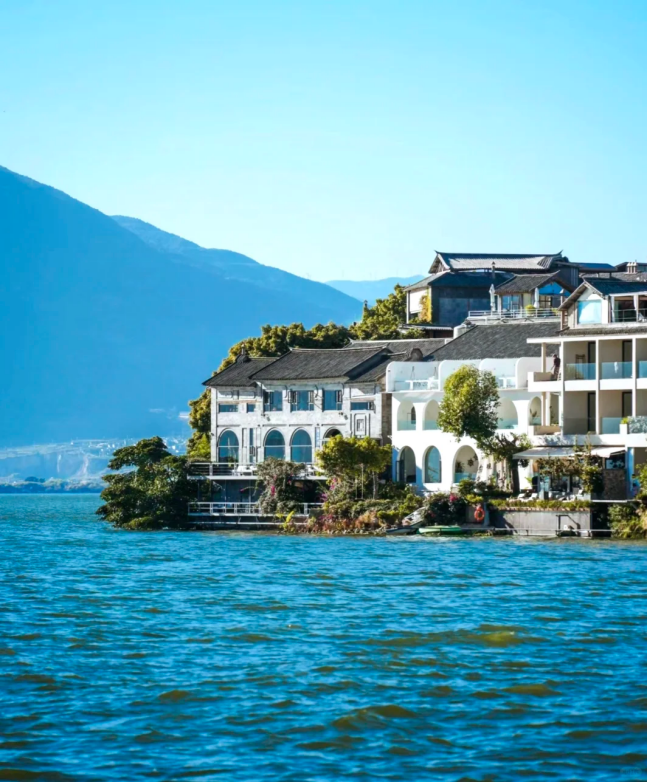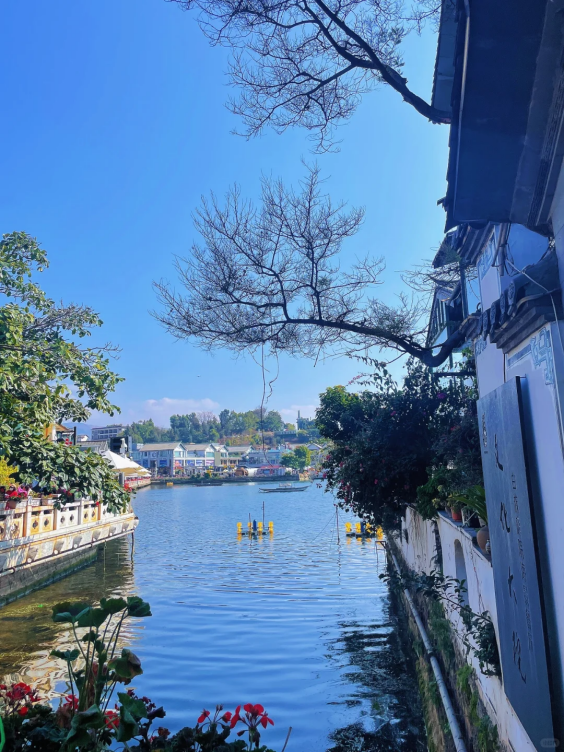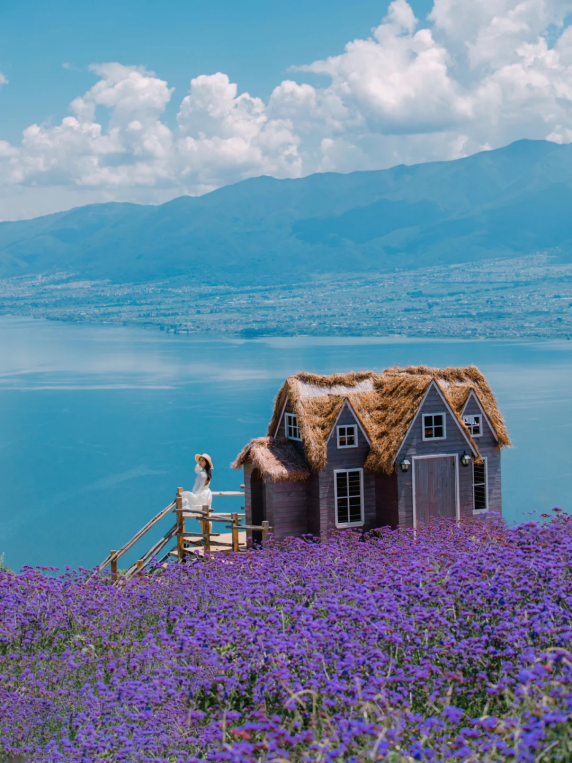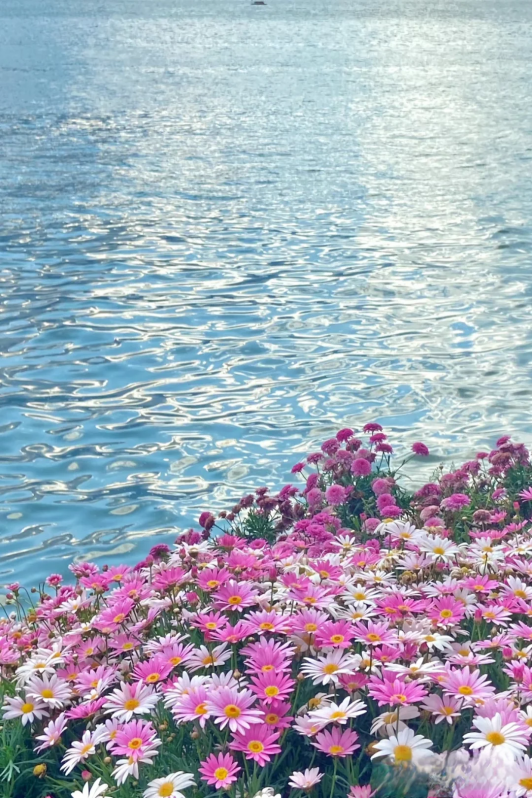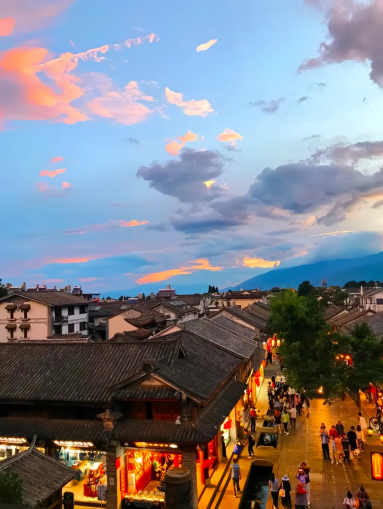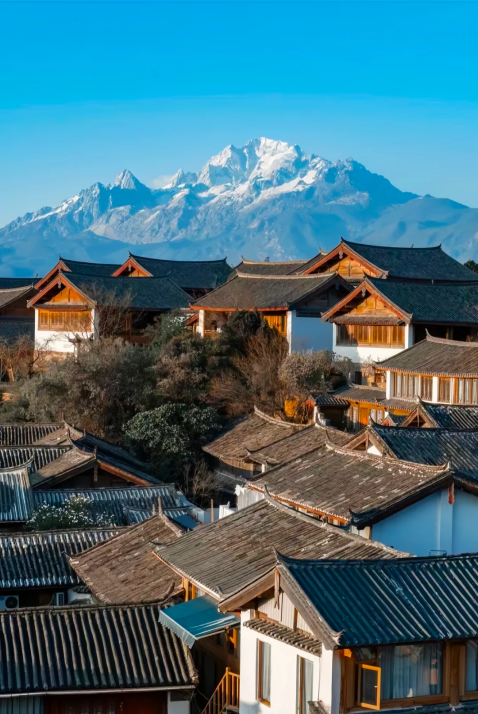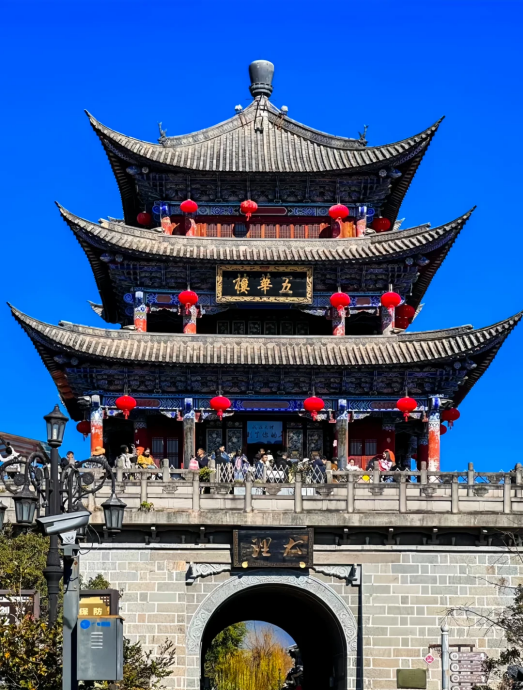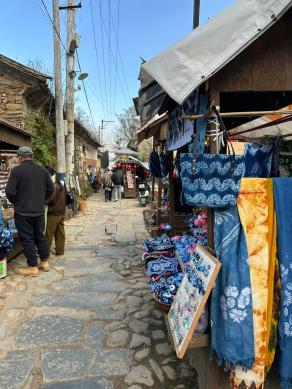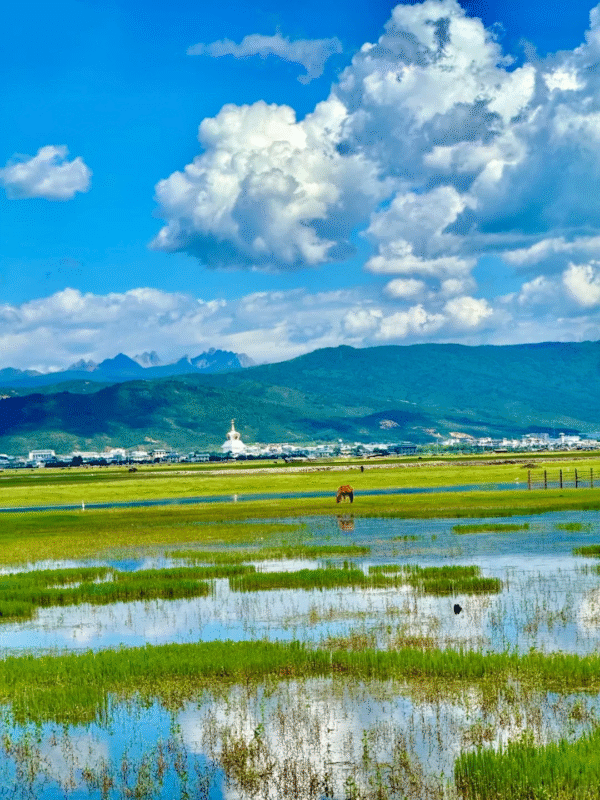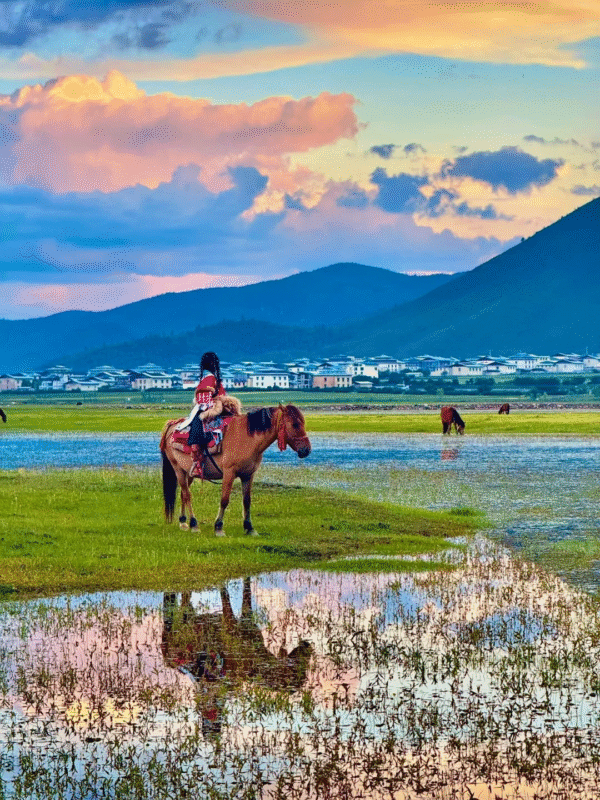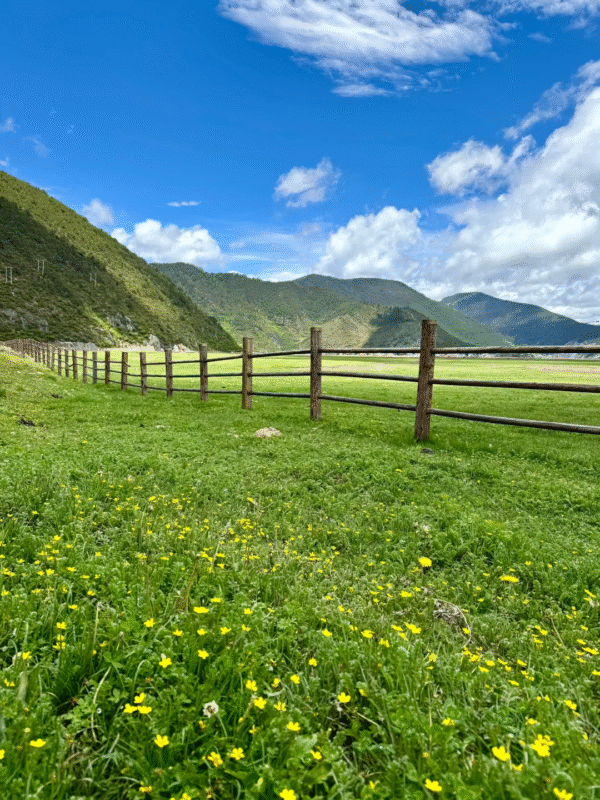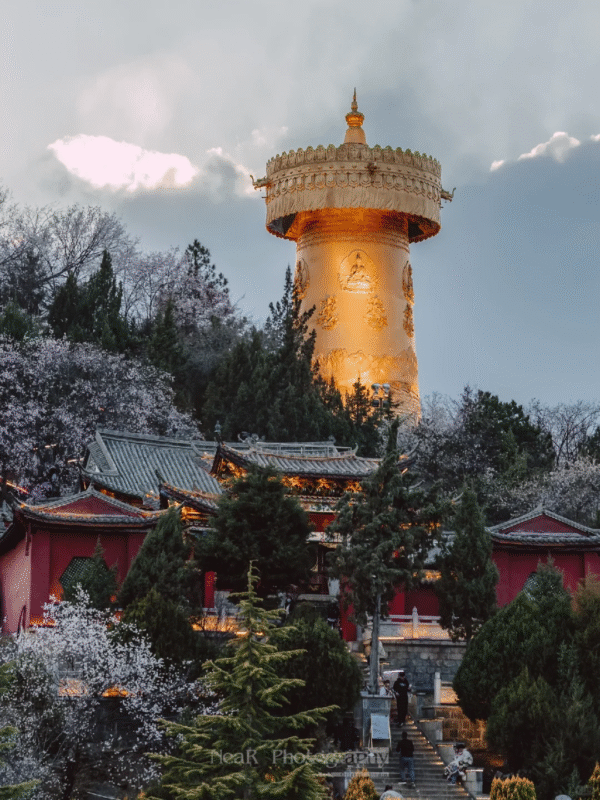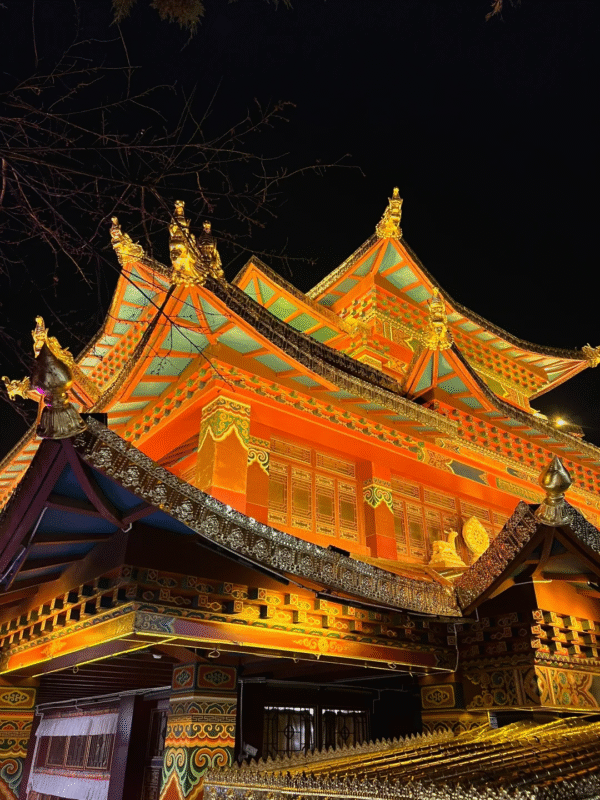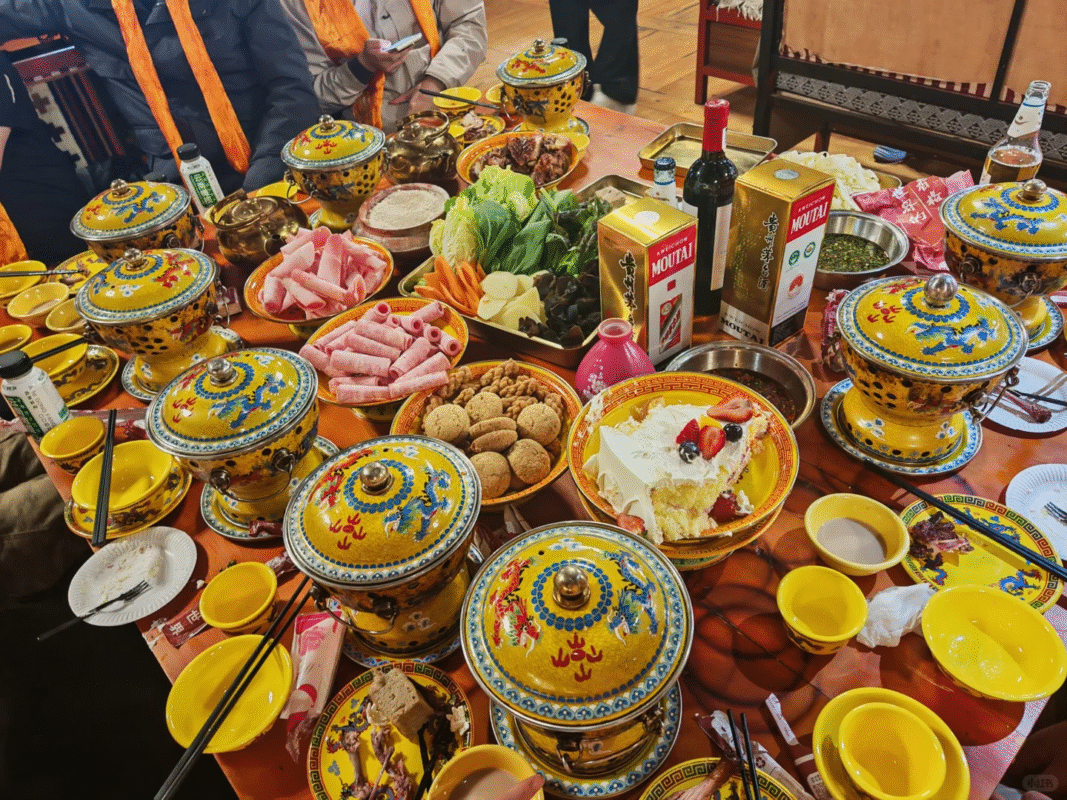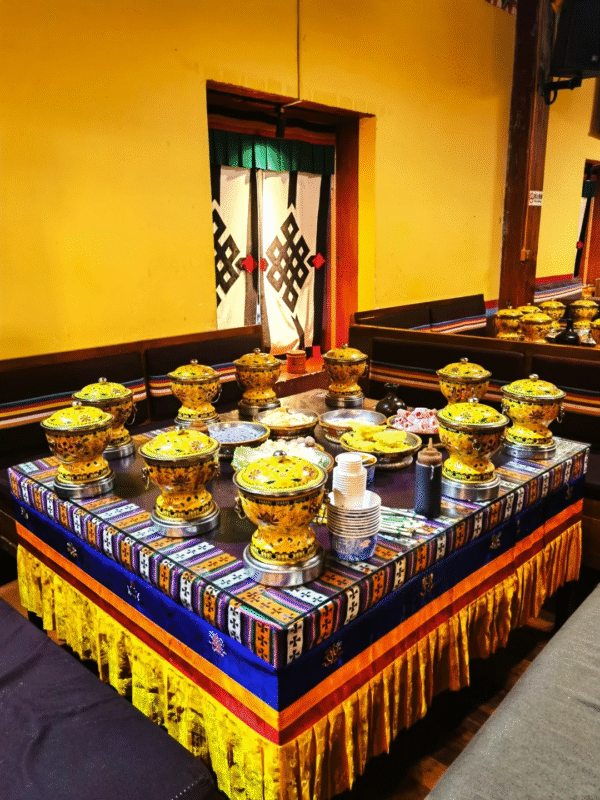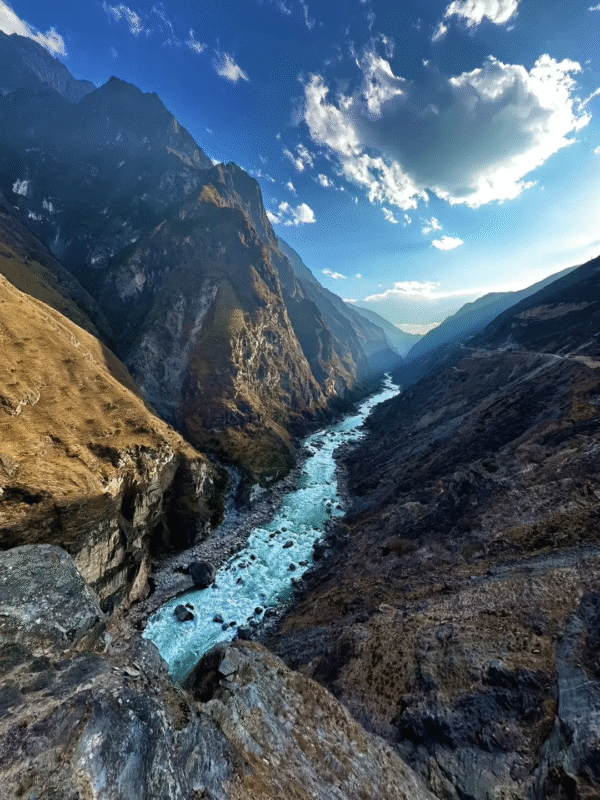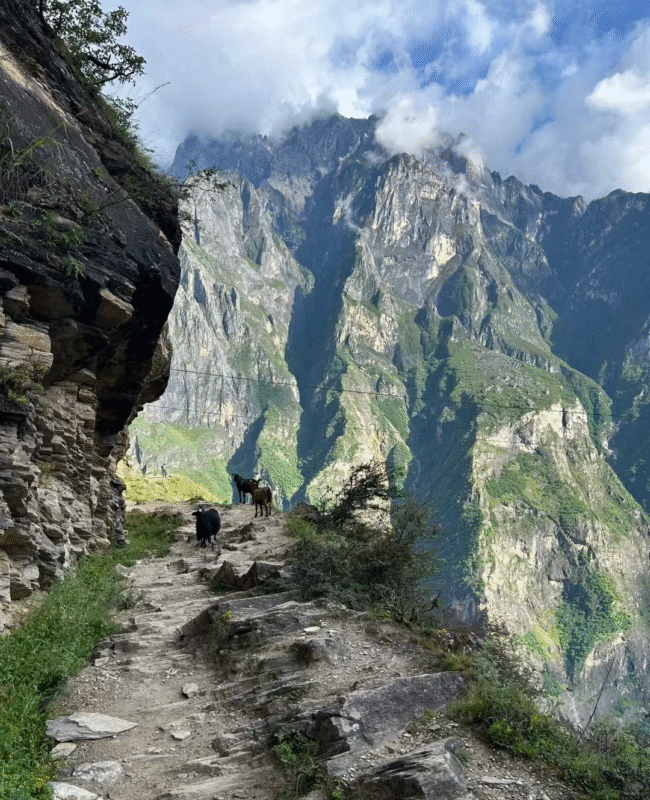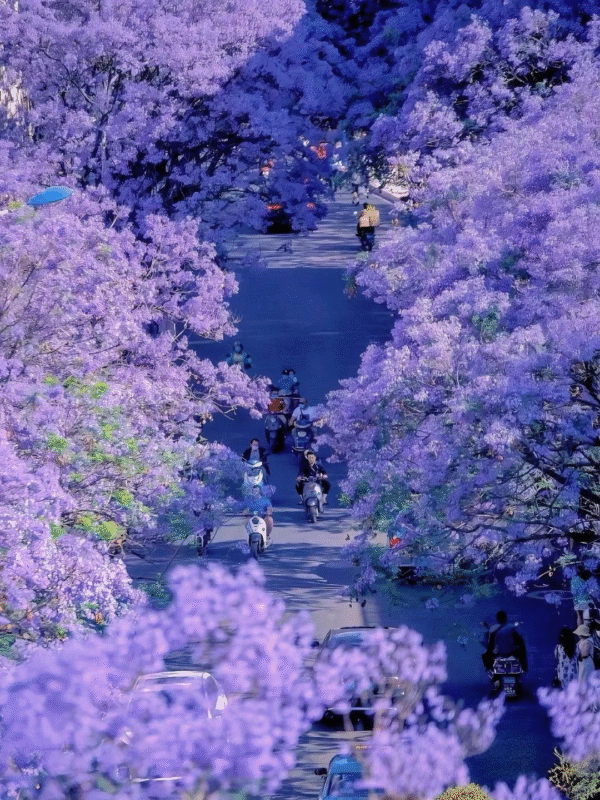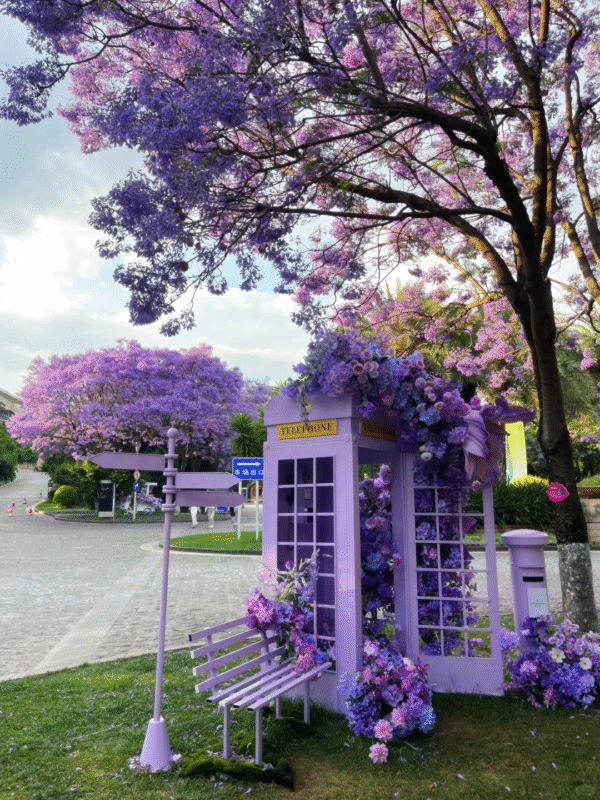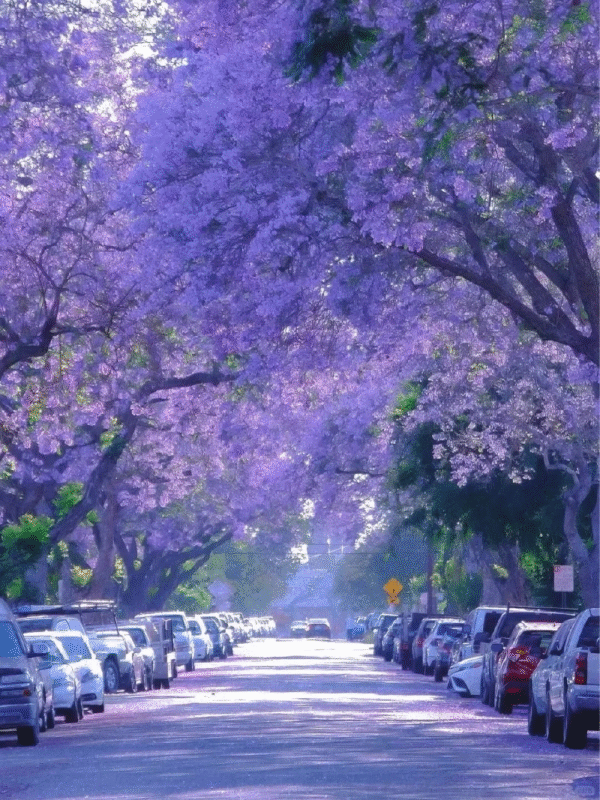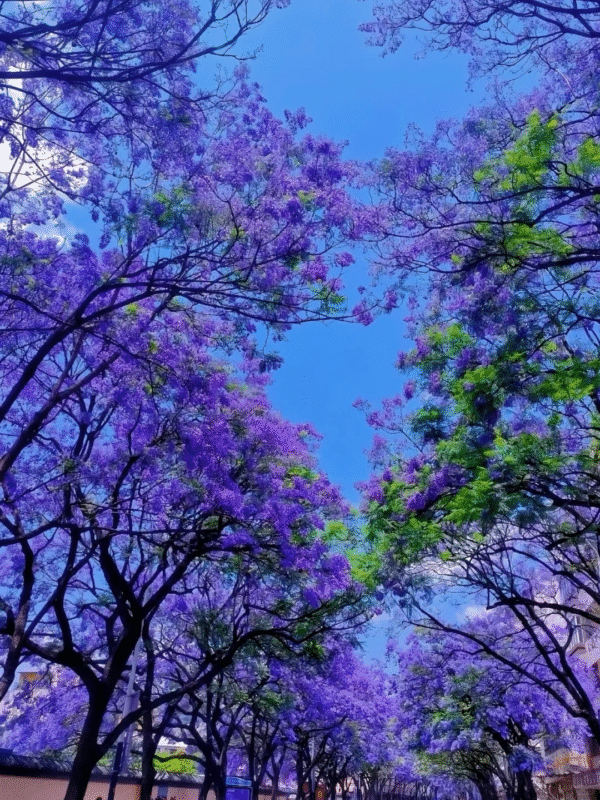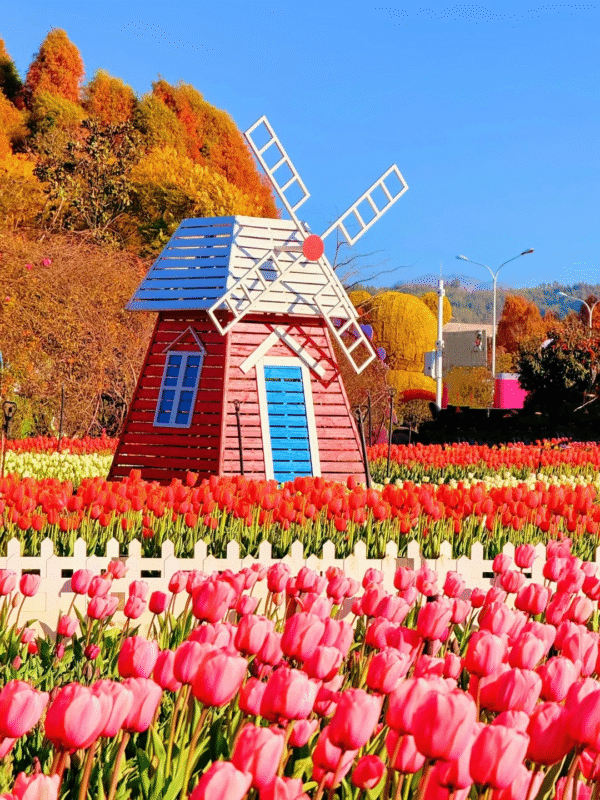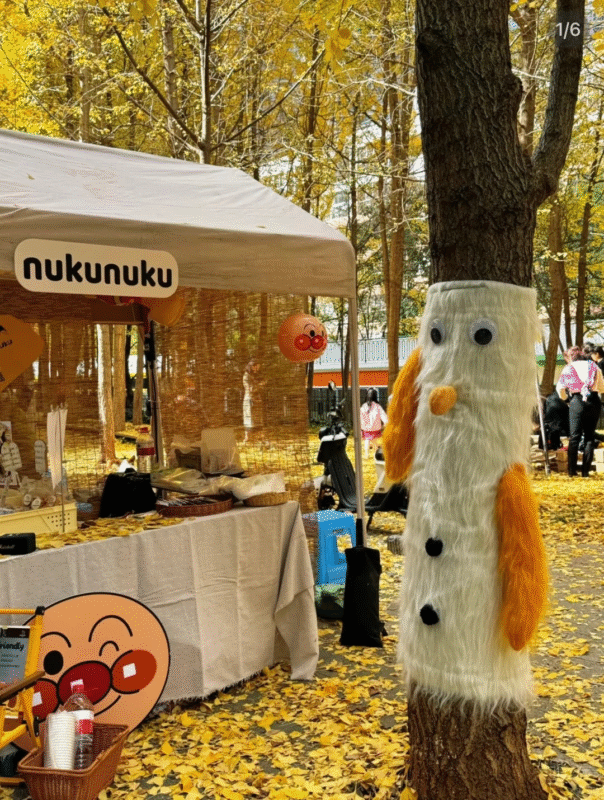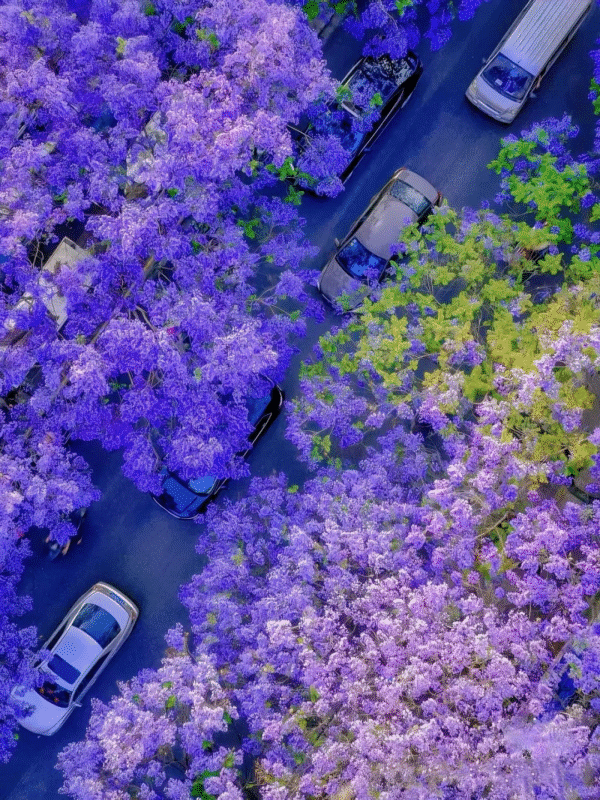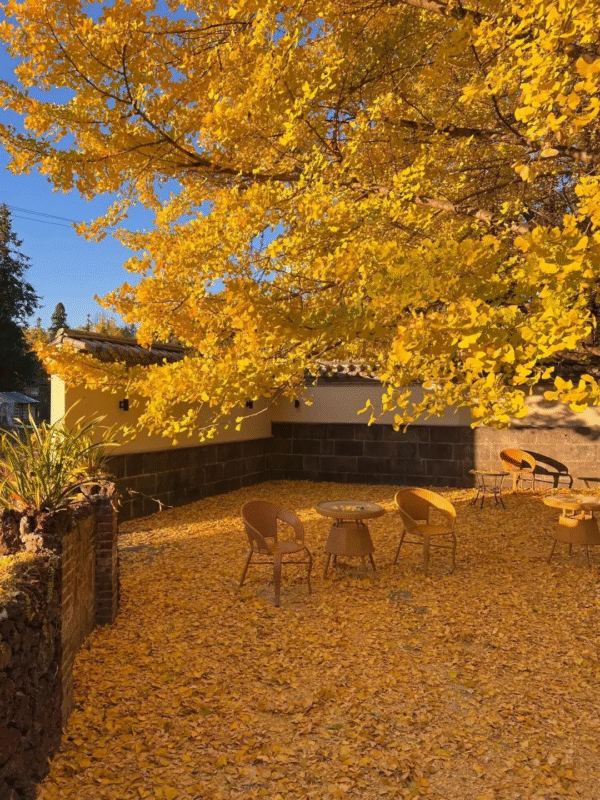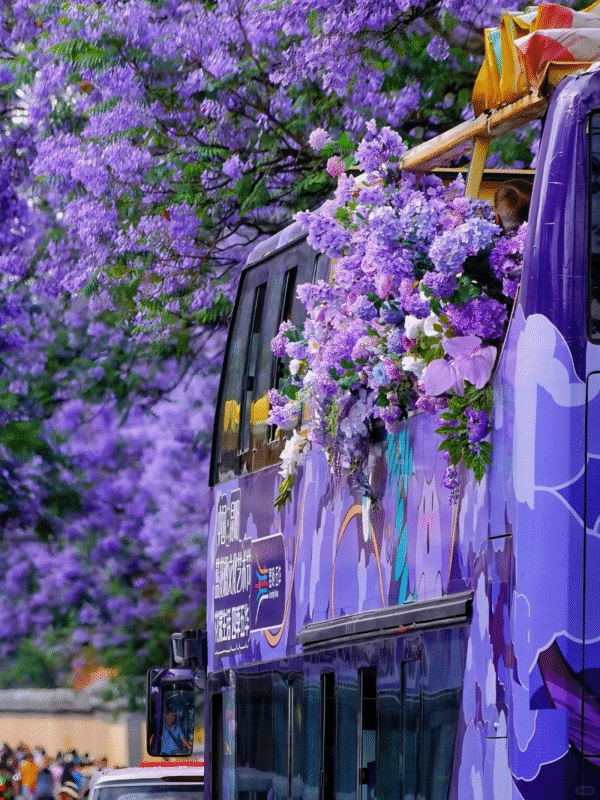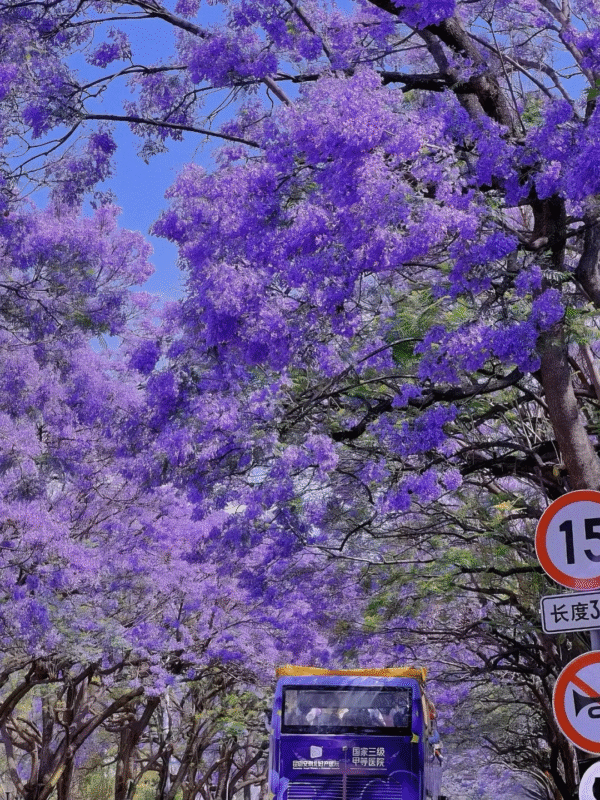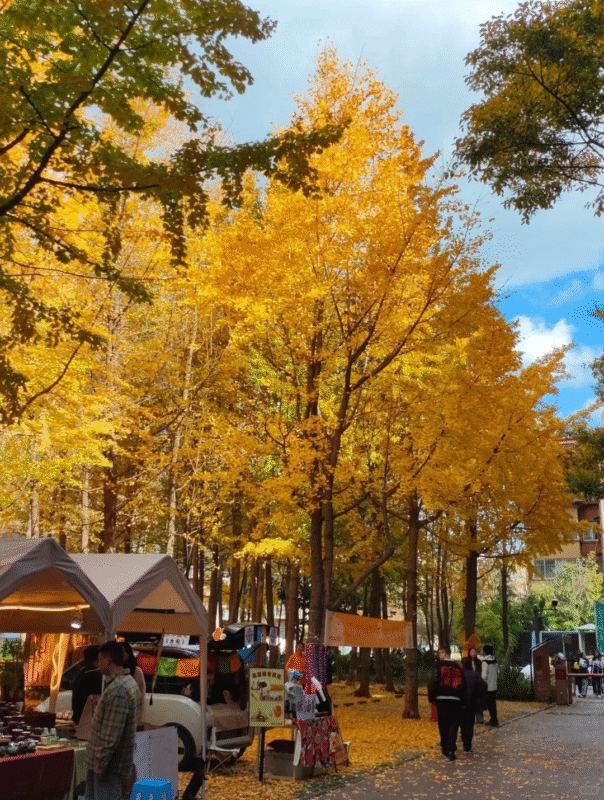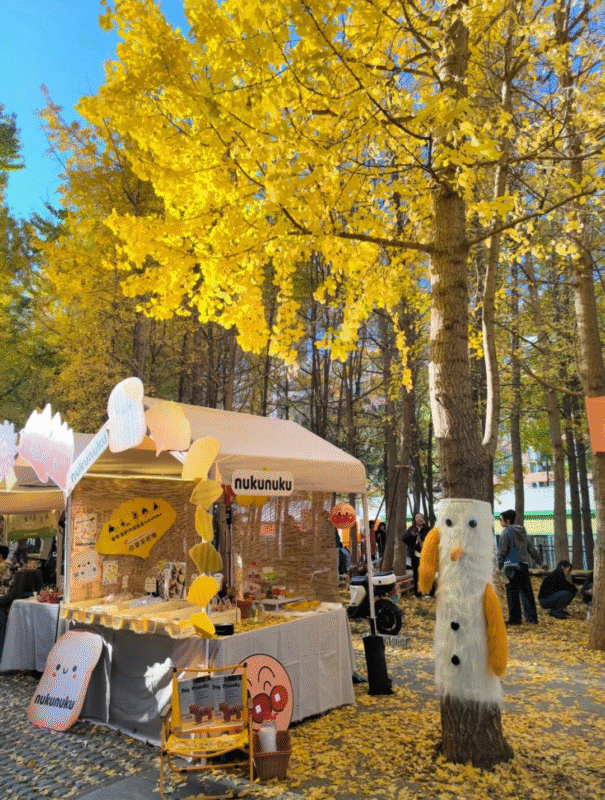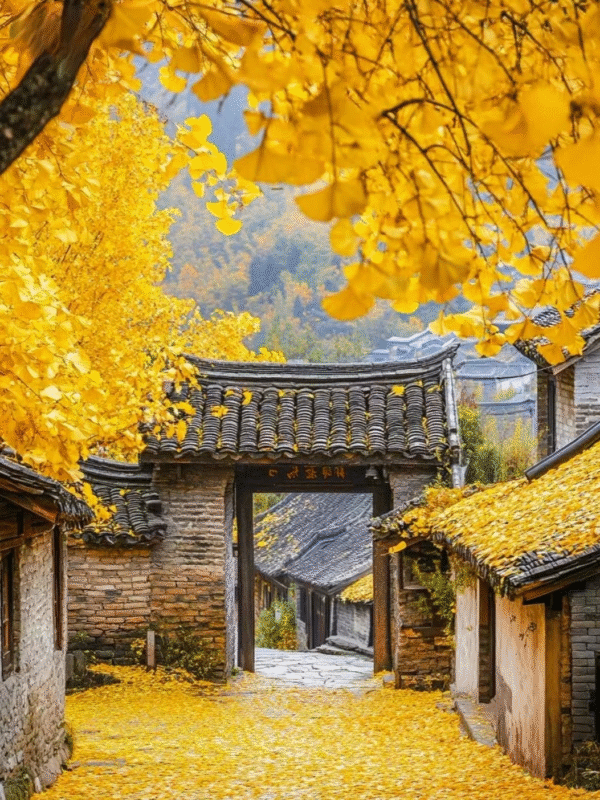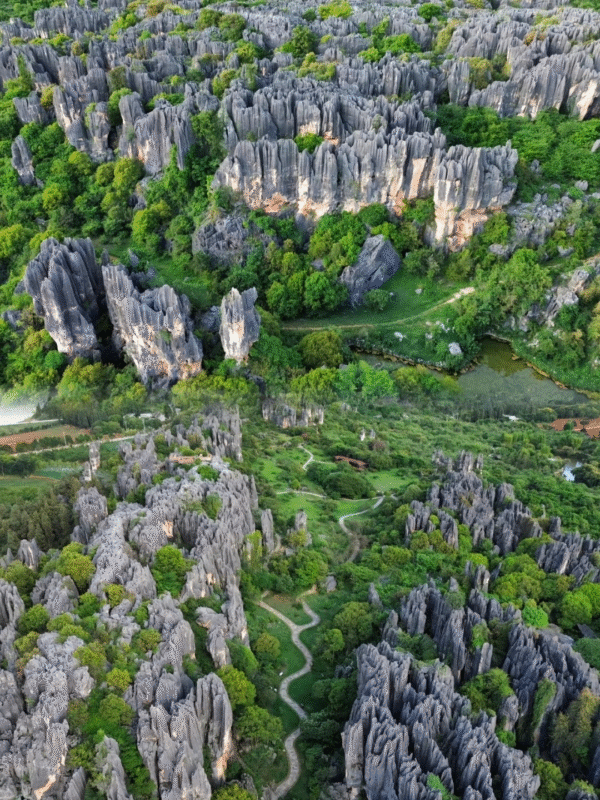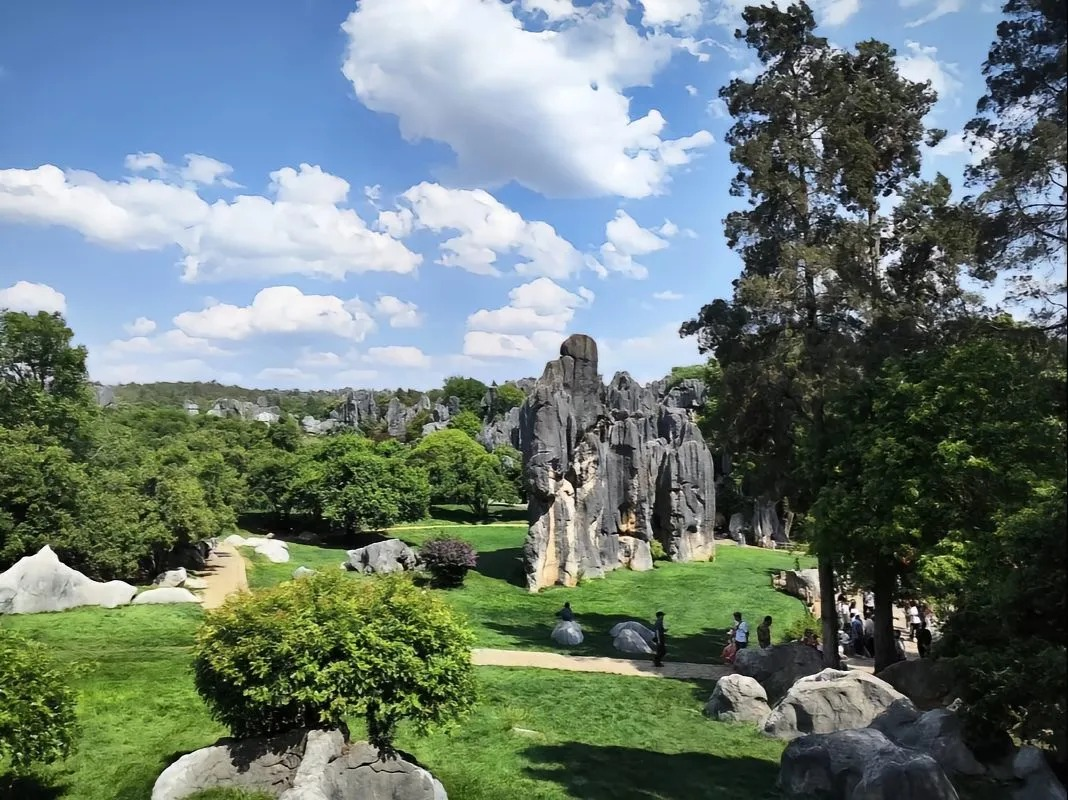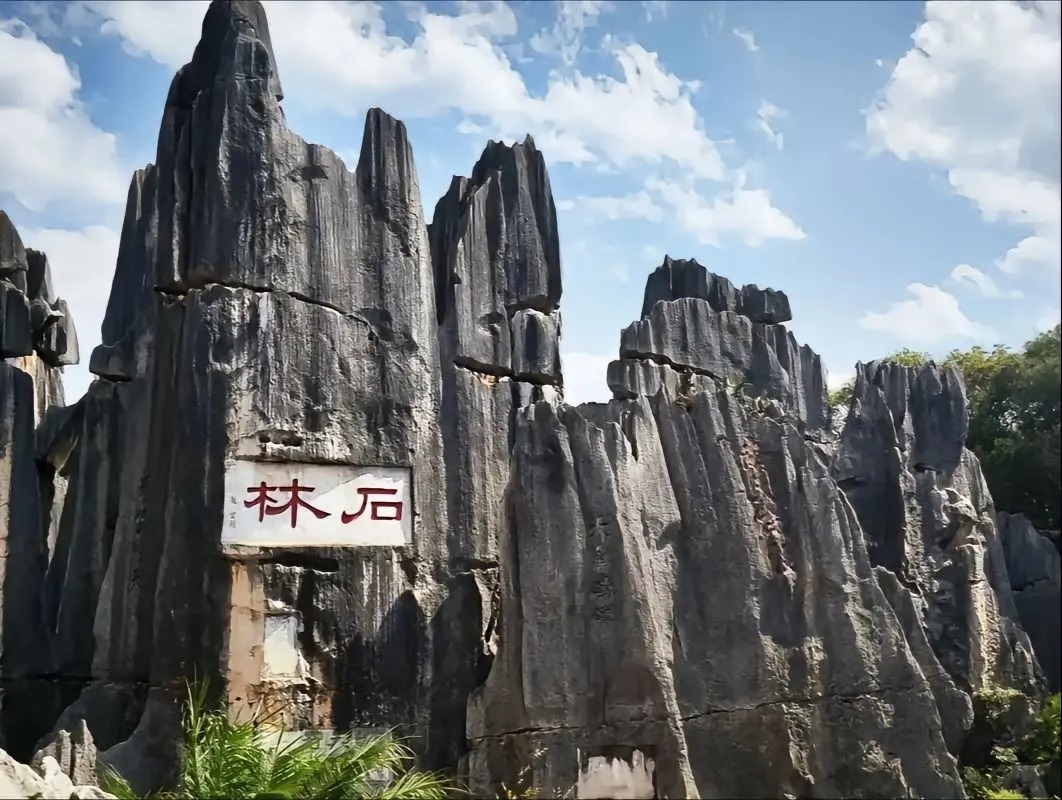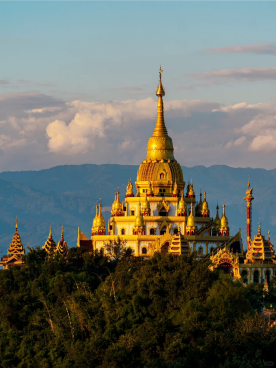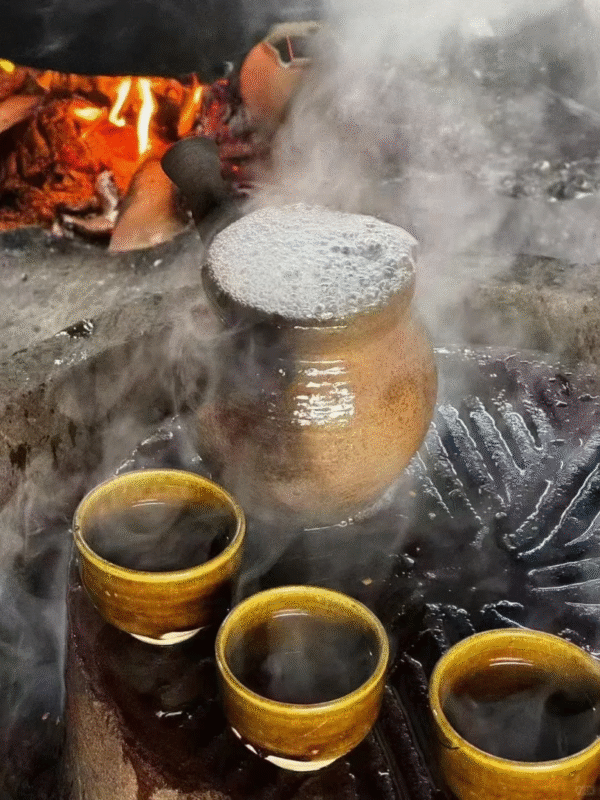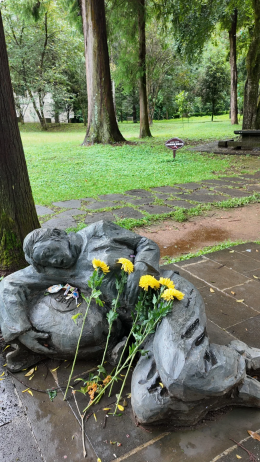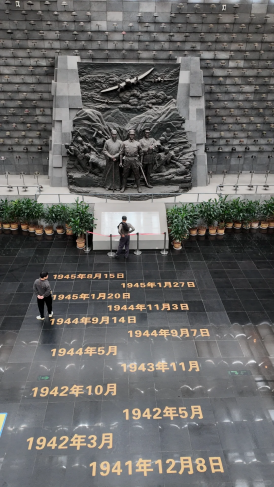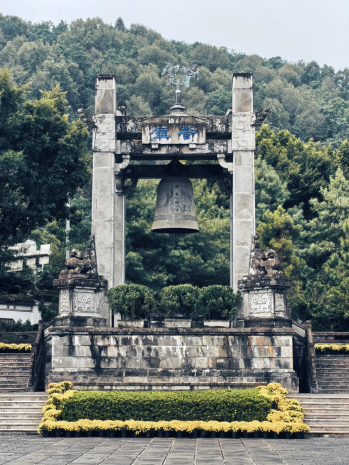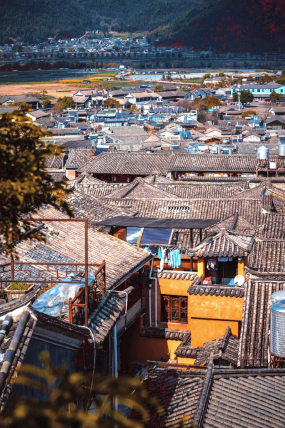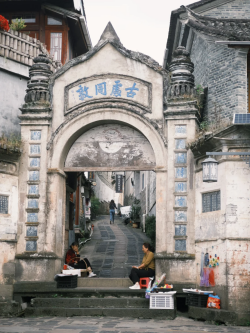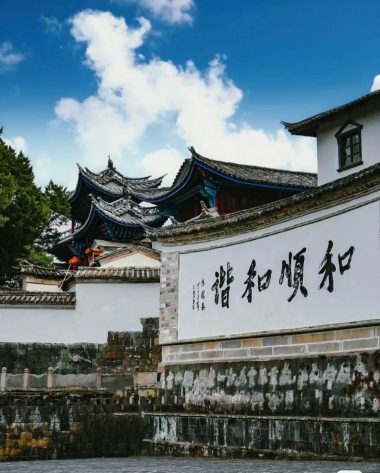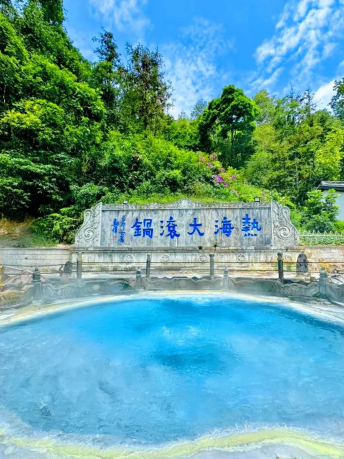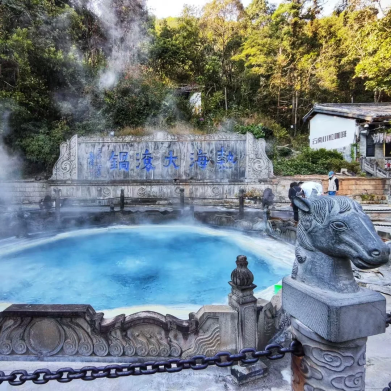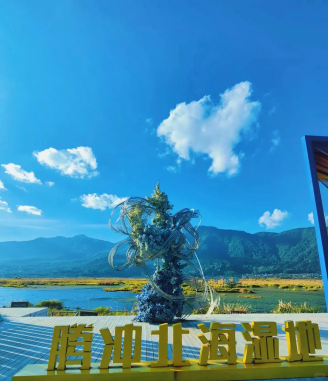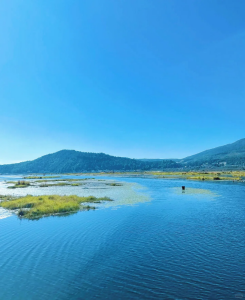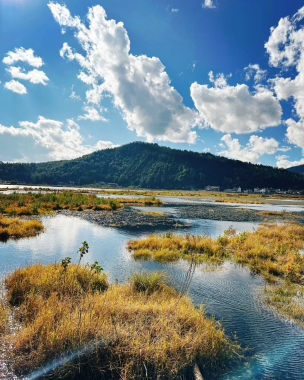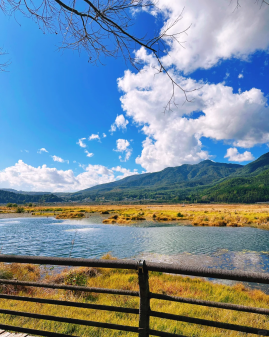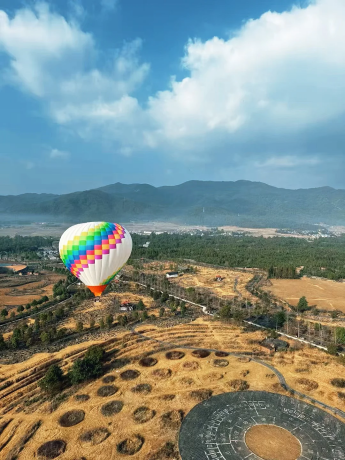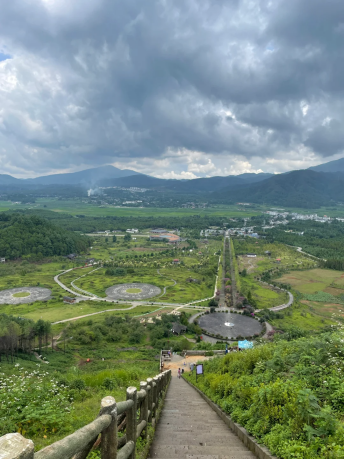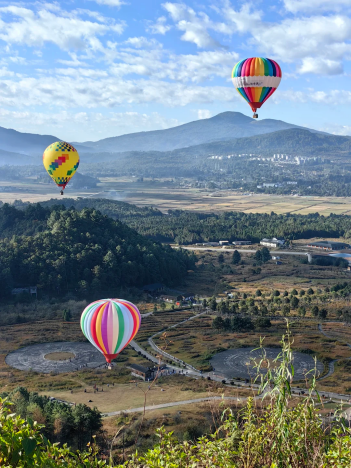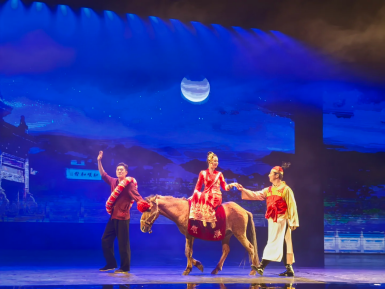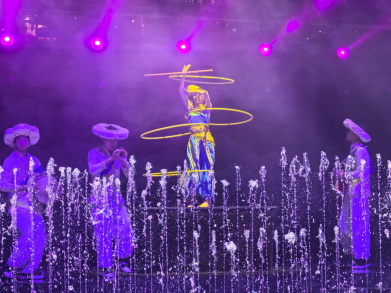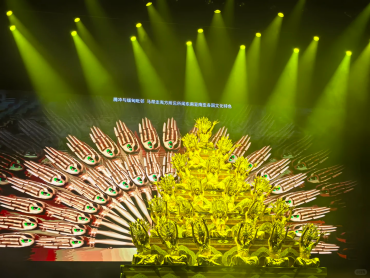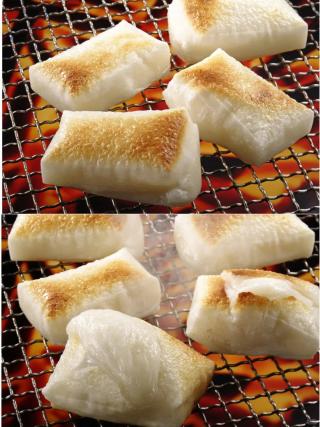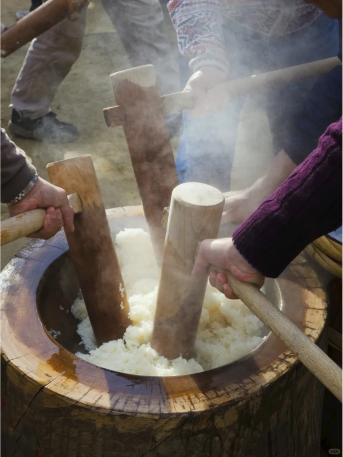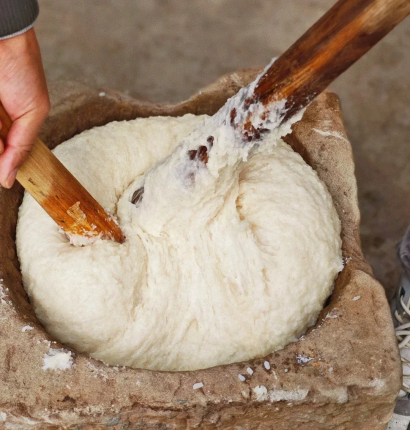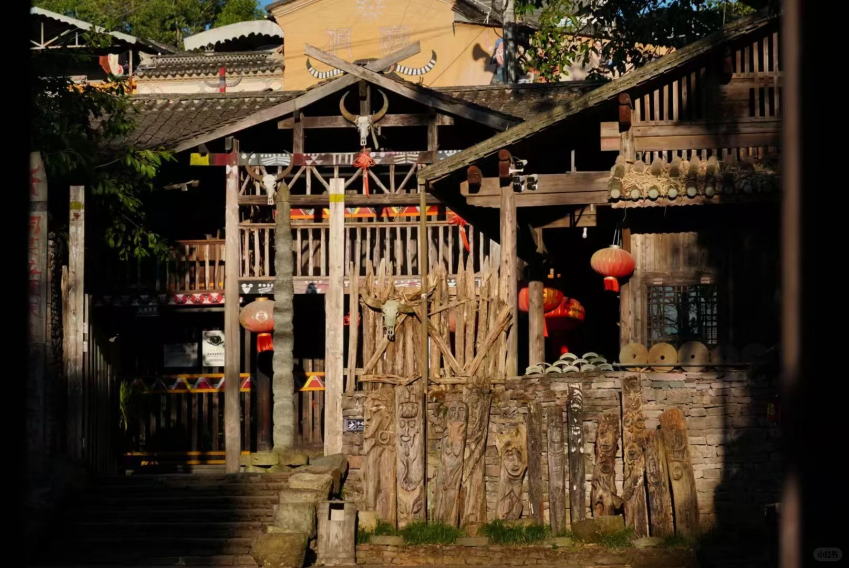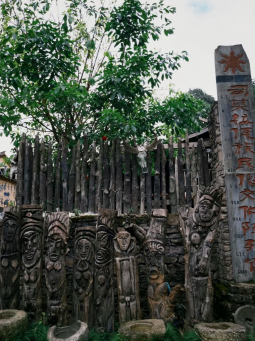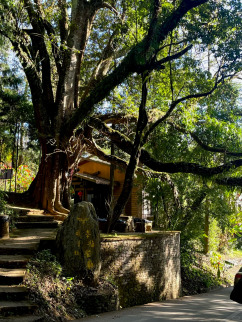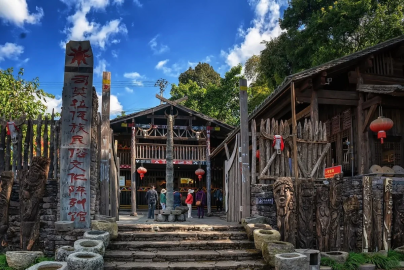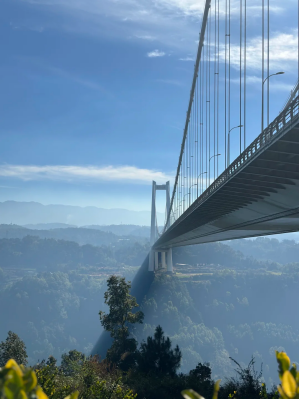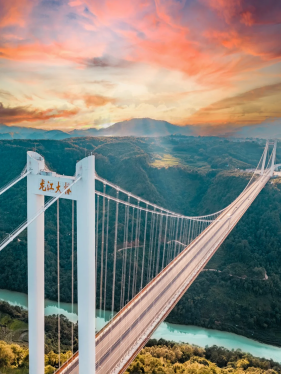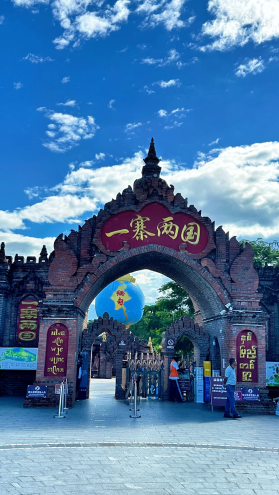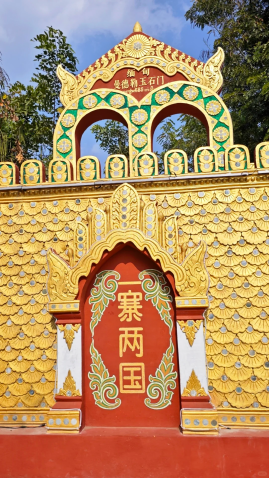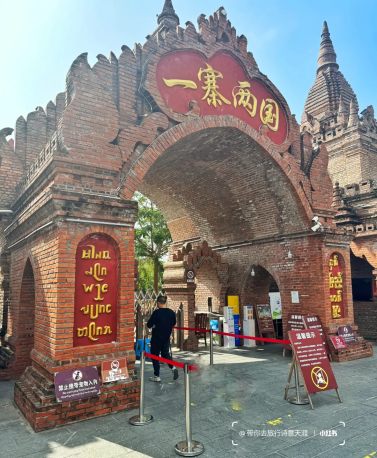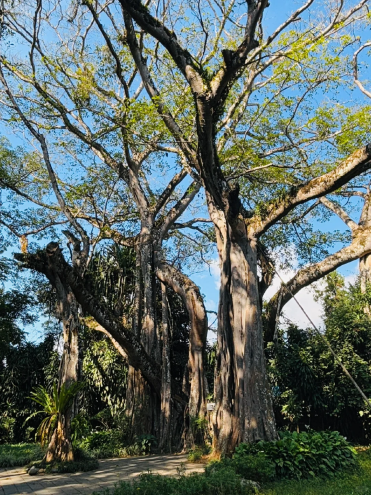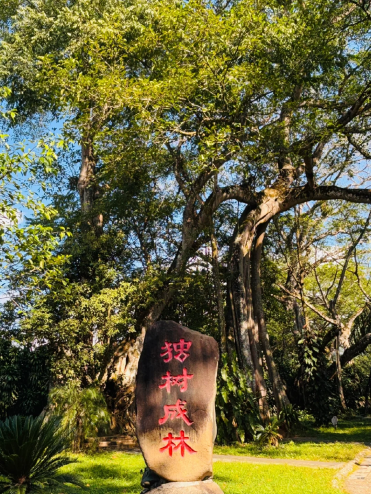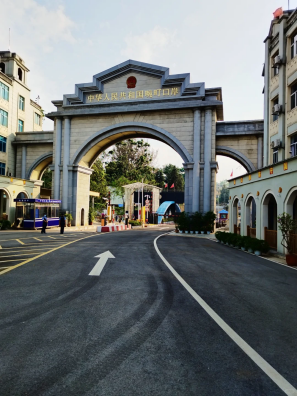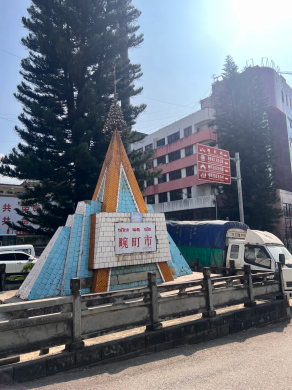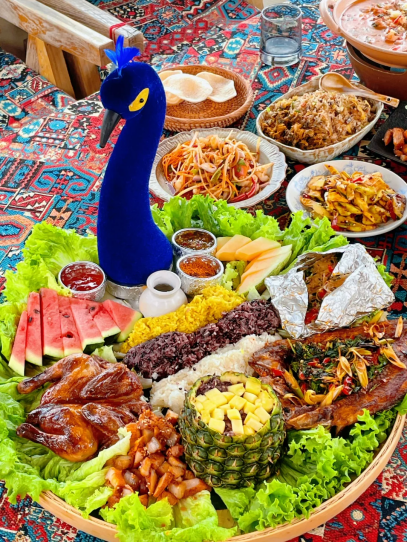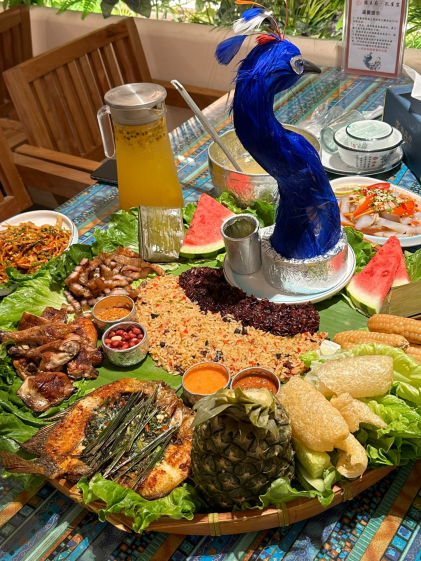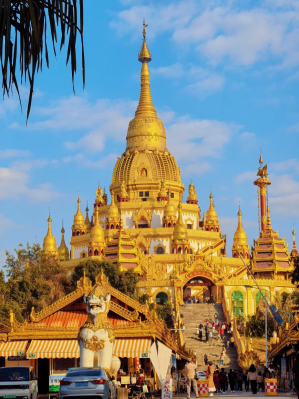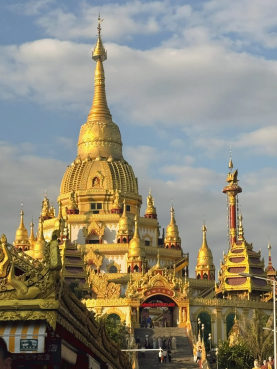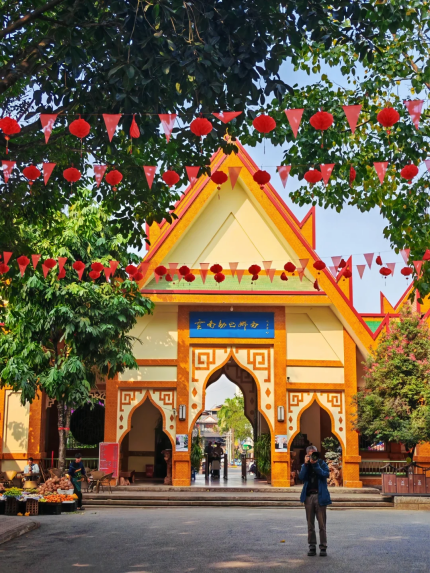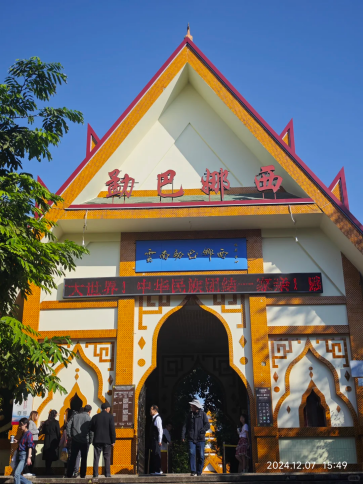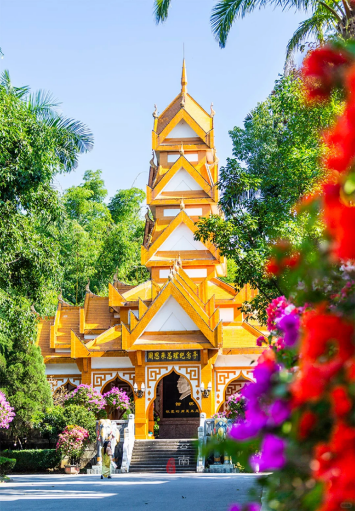Sacred Mountain and Holy Water: A multi-faith corridor from the golden wings of the Buddha capital to the secret realm of tattoos (10 Days 9 Nights)
10 Days 9 Nights- 24-hour butler service
- Transfer service
- Professional tour guide
- Star-rated accommodation
- special cuisine
Overview
When the gilded Garuda bird of the three towers of Chongsheng Temple flutters its wings in the clouds and mist of Cangshan, the Brahma bell of Nanzhao Kingdom thousands of years ago is still echoing over the Erhai Sea – the flaming tail feathers of the golden-winged bird sweeps the eaves of the pagoda, the prayer beads twisted by the fingertips of the Bai Grandma string up the Zen and wind and moon of Dali, through the pure white “Santorini” of Dali’s new life, the modern dream and the indigo of the Bai tie-dyeing collide on the shore of the Erhai Lake, and in an instant it is crushed by the wind of the Nujiang Gorge: the Lisu chant of the old Mudeng Church floats out of the century-old wooden window, Hanging from the top of the Biluo Snow Mountain, along with the cross left by the French missionaries, the believers weaved Christianity into the fire of the Nu people with four-part hymns.
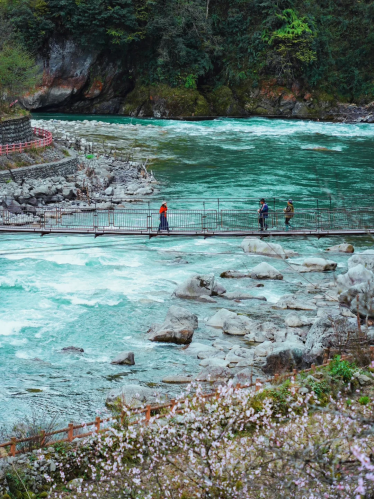
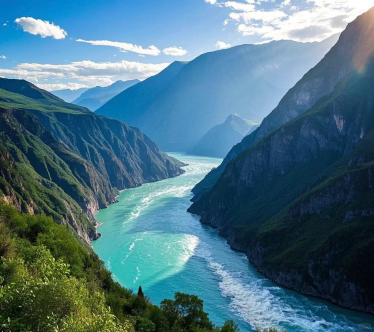
Going north along the Nu River, the wooden houses in Wuli Village float and sink in the morning fog, the chisel marks of the ancient tea horse road are deeply embedded in the rock wall, and the Nu girl walks across the rattan bridge with firewood on her back, and the tube skirt sweeps over the mountain stream, like the reflection of the Blue Moon Valley in “Disappearing Horizon”. To Bingzhongluo, the prayer flags of the Tibetan Buddhist temple and the rose window of the Catholic church keep the oath of “living together with man and god”, the flowers of the Nu people’s “Fairy Festival” are adorned with Shimenguan, and in the Kantong Village of the first bay, the Lisu people sing and dance, and the river bends into an arc that embraces all gods.
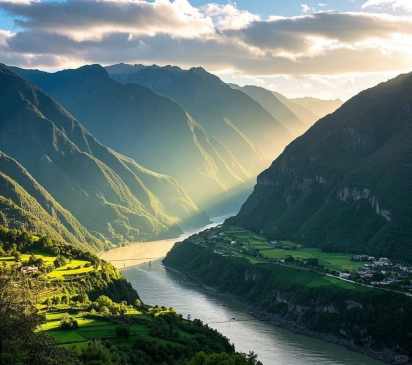
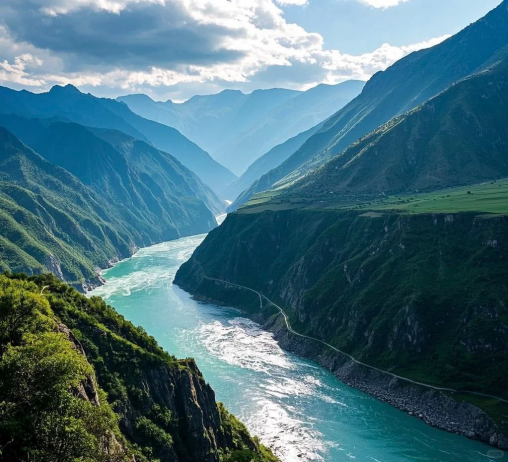
Mountains and rivers are the scriptures, and humanity is the weft: from the Buddha country guarded by the golden-winged bird to the disappearing surface of the Dulong River, from the Lisu chant to the Nu flower sacrifice, every step is a symbiotic poem of multiple beliefs in the canyon.
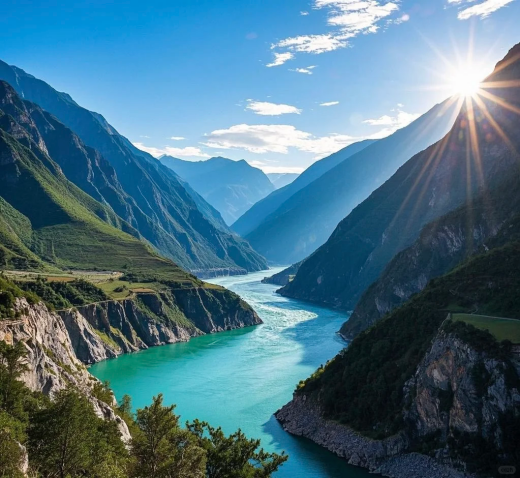
Highlights
- Nujiang Grand Canyon: The Nujiang Grand Canyon is the most spectacular, the world's longest, god-named, beautiful and most primitive Oriental Grand Canyon.
- Dulong River: A remote and mysterious river valley. It is one of the most well-preserved areas in China. Inhabited by the ancient and closed civil war of the Dulong clan
- Bingzhongluo: There are mysterious autumn buckets, ancient tea horse roads, Wuli Village, Gongdang Sacred Mountain, the surging Nujiang River 1st Bay, and the beautiful and mysterious Peach Blossom Island.
Itinerary
Lodging: kunming
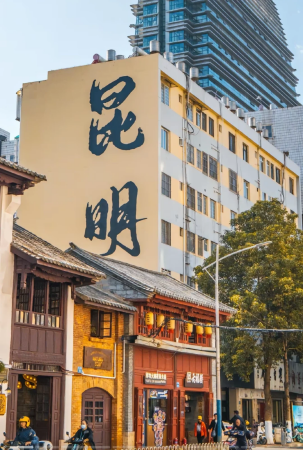
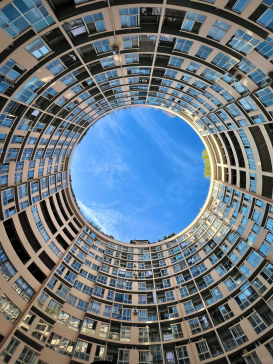
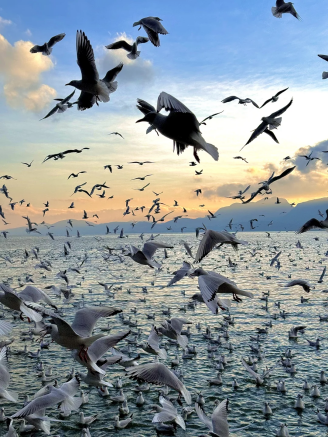
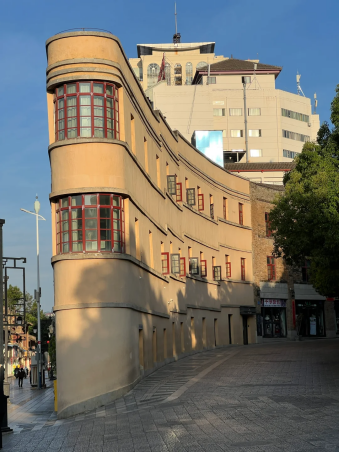
Fly to [Kunming] by local flight, and check in to the designated hotel for rest after being picked up by a special person.
The rest of the time, you can freely arrange to wander around the downtown area of Kunming, like the lively you, Nanping Street, Cuihu is the commercial and cultural distribution center of Kunming; If you like historic sites, you can go to Jinmafang and the Army Lecture Hall to take a walk around and feel the centennial situation of old Kunming in modern times; If you like to be quiet, there is any café in Culture Lane or Nanqiang Street, which not only satisfies the pastime of time, but also does not miss the atmosphere of the journey!
Breakfast, lunch and dinne. Lodging: dali.
After breakfast, drive to Dali and visit the landmark scenic spot of Dali - [Chongsheng Temple Three Towers] (including battery car):
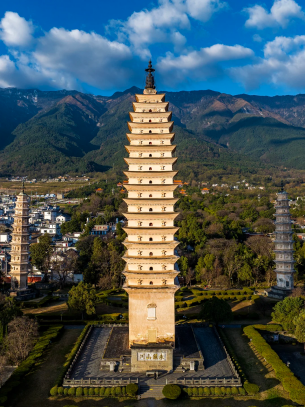
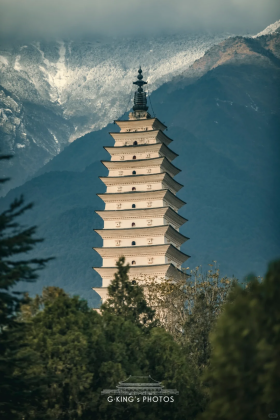
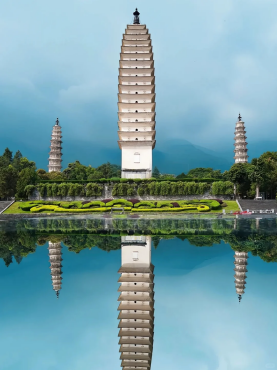
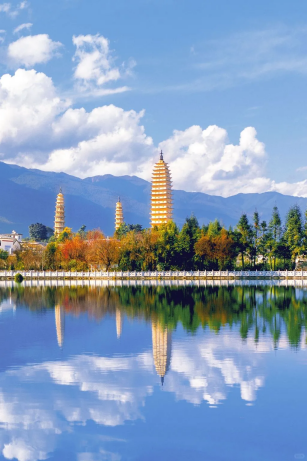
The three towers of Chongsheng Temple, located between Dali and Cang'er, were built in the period of Nanzhao Quanfeng You (824-859 years), standing for thousands of years with the posture of "one big and two small": the main tower Qianxun Tower (69.13 meters high) is a model of square dense eaves brick tower in the Tang Dynasty, and the north and south double small towers (both 42.19 meters high) are in the octagonal dense eaves style of the Song Dynasty, and the three are integrated, becoming the oldest and most majestic Buddhist building complex in southern China.
Its birth carries the ecological wisdom of the ancestors of the Bai nationality of "Zhenlong to control the water" - according to the "Jinshi Cui Edition", because Dali was the "Longze flood land" in ancient times, it was built according to the legend of "Dragon Fear Dapeng", and the architectural miracle was achieved with the skillful skill of "building a tower with soil and digging the tower". As the "holy realm of the Buddha capital" of Nanzhao Dali, Chongsheng Temple once had thousands of halls, attracting the worship of Southeast Asian dynasties, and witnessed the unique history of the nine kings of Dali who abdicated the throne and became monks.
Although after the catastrophe wave (Ming Zhengde earthquake cracked and compounded, modern war destroyed the temple and the tower), the three towers still stand tall with the Tang Dynasty wooden bone seismic structure and the Ming Dynasty reinforced brick layer, in 1978 the repair was found in the center of the tower Nanzhao Dali Buddha statue scriptures and other more than 600 pieces of secret collection, become the interpretation of the ancient civilization of the "underground archive". Now, the wall of Mu's inscription "Yongzhen Mountains and Rivers" is still there, and the shadow of the tower reflects the Erhai Lake, melting the Zen of royal power, border craftsmanship and natural belief into an immortal spiritual totem of the land of Cang'er.
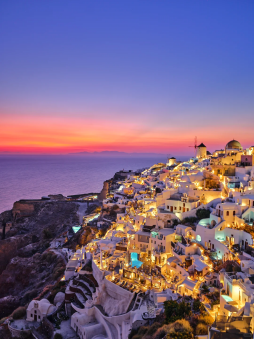
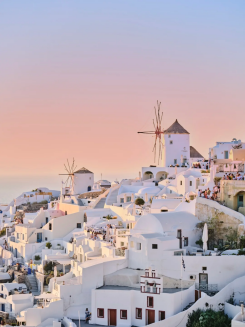
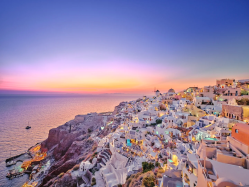
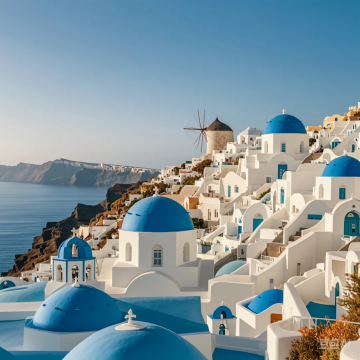
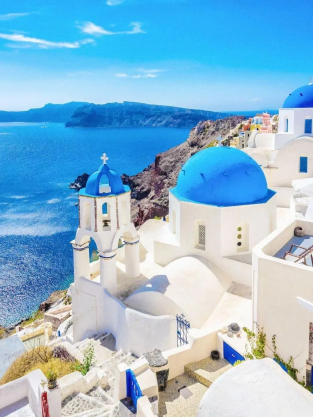

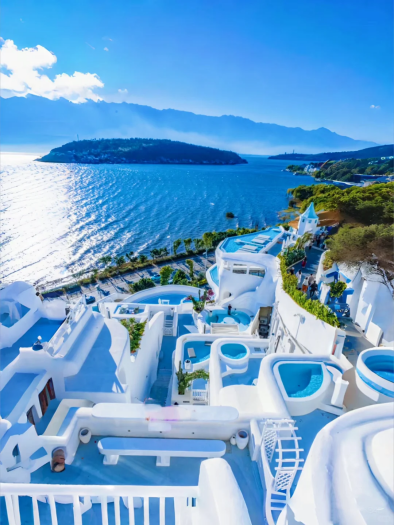
After that, we will go to [Santorini] Ideal State "Tourist Resort Town", based on the east of Dali Haidong, with mountains and seas as paper and ideals as ink, outlining the unique tourist style town in your dreams. The geography of Haidong is the same as that of the Aegean Bay, and the scenery is beautiful. Ideal Bangjin is also home to more than a dozen cliff and pool hotels, known as China's version of Santorini. After dinner, check in to the hotel for a rest.
Santorini (formerly known as Thira), a volcanic island ring in the Aegean Sea, is marked by the devastating Minoan eruption 3,500 years ago - the most violent volcanic activity on the earth in nearly 10,000 years (VEI-7), 🌋 which collapsed the center of the island into a crescent-shaped caldera, and the 60-meter-thick volcanic ash buried the ancient city of Akrotiri in the Bronze Age, but miraculously preserved the three-storey building complex, the hot and cold water supply system, and the living murals such as "The Saffron Gatherer" and "The Fisherman". It has become the most complete site of the Minoan civilization outside Crete, and the unearthing of no remains confirms the legend of the wisdom of the ancestors.
The name "Santorini" comes from the 13th century Venetian tribute to the saint Elaine, and the previous Dorian city-state of Thera (9th century BC) colonized North Africa, and the Phoenician, Roman, Byzantine and Ottoman rule was precipitated into multi-civilization stratolites in blue and white troglodyte architecture and basket-shaped vines (millennial cultivation of wind and drought).
Plato's "Atlantis" conjecture takes root here, and the twilight bells of modern volcanic springs and cliff churches continue the eternal dialogue between the divine power of nature and humanistic beliefs - every inch of black and red sand and every glass of Asirtico wine is an epic of civilization tempered by lava and waves.
Breakfast, lunch and dinner. Lodging: Laomudeng.
After breakfast, drive to Old Mudden.
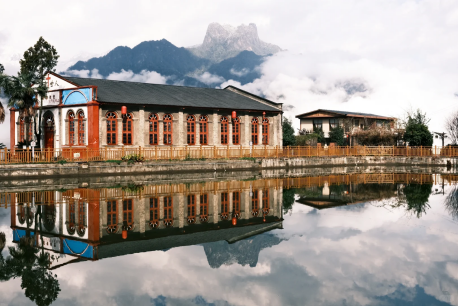
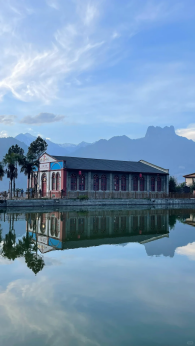
Lao Mudeng (Nu language "where people like to come"), this ancient village of the Nu nationality hanging halfway up the Biluo Snow Mountain, is a frontier cultural secret land where multiple beliefs and living intangible cultural heritage coexist. Its core carries the Lisu chants of the century-old Christian church (built by French missionaries in 1930), intertwined with the original beliefs of the Nu people in the morning mist of the canyon; In addition, the sonorous dance steps of the national intangible cultural heritage "Dabia Dance" and the provincial intangible cultural heritage "Oh Dede" folk song are sung in the fire pond, continuing the bloodline of the Nu people from farming clans to modern villages. Villager Yu Wulin and other inheritors have integrated ancient music, mouth strings, and pilaf into the homestay experience through the "intangible cultural heritage tourism" model, driving the transformation of the whole village from poor farming to a famous cultural and tourism village, so that the stories and ethnic skills of the border can be tempered into canyon poems in the new era in the bonfire of "Lao Mudeng Night".
On the way, visit the world-famous "Rameden Tiger Jumping". Tiger Leaping Stone is a giant rock lying in the river, here, it is 50 kilometers away from Liuku City, whenever the Nu River water falls and the tide falls, the cliffs on both sides of the canyon are like cutting, the strange stones in the river stand in a forest, it is very spectacular to fly the stone of the river.
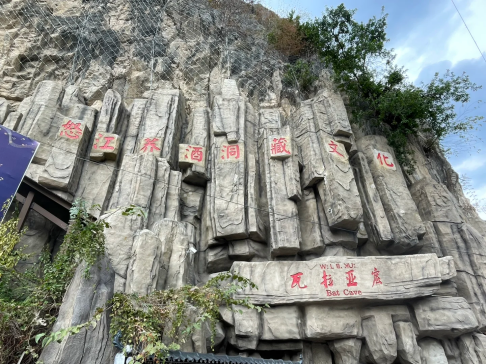
After that, visit [Huaraya Cave]" is a Lisu language, which means "bat cave", and 3 natural cave entrances connect multiple large karst caves into a group of karst caves. Among the 3 natural caves, 2 are distributed in the Bajiao River Scenic Area, which can be connected to the Huaraya Caves.
Visit [Jinmanyin Beach] The terrain here is slightly dropped and tortuous, the water seems to be very turbulent, this is a huge loop, the riverbed is covered with huge river pebbles. The terrain here is slightly uneven and tortuous, and the water is very turbulent, and it is a huge loop, and the riverbed is covered with huge river pebbles.
Arriving at the most beautiful village in the country, Lao Mudeng is a transliteration of the Nu language, which means "longing for the place". Although there are many ethnic groups such as Nu, Lisu, Bai, Han, and Tibetan, the vast majority of them have the same belief in Christianity, and only a very small number of people maintain their original beliefs, such as the Dongba religion of the Lisu people and the Tibetan Buddhism of the Tibetan people, and the Laomudeng Church. Overnight stay at the Old Mudden Village Inn.
Breakfast, lunch and dinner. Lodging: Bingzhongluo.
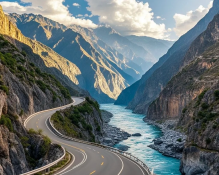
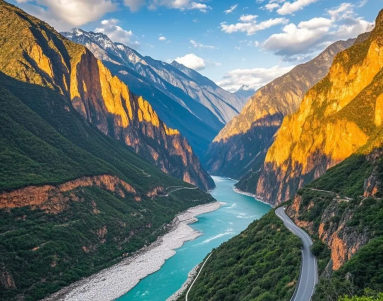
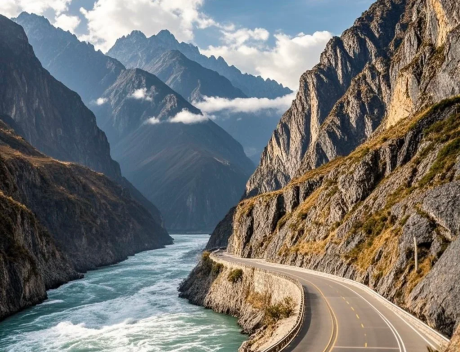
If you want to get up early, you can watch the sunrise of Lao Mudeng, go to the Lao Mudeng Observation Deck, here is the best angle to watch the [Nu River Canyon], you can watch the crown peak Rizhao Jinshan, the morning view of the Nu River Grand Canyon on a sunny day, the whole village is cloudy and misty when it is cloudy, just like a fairyland. Feel the "rage" of the Nu River [the first roar of the Nu River].
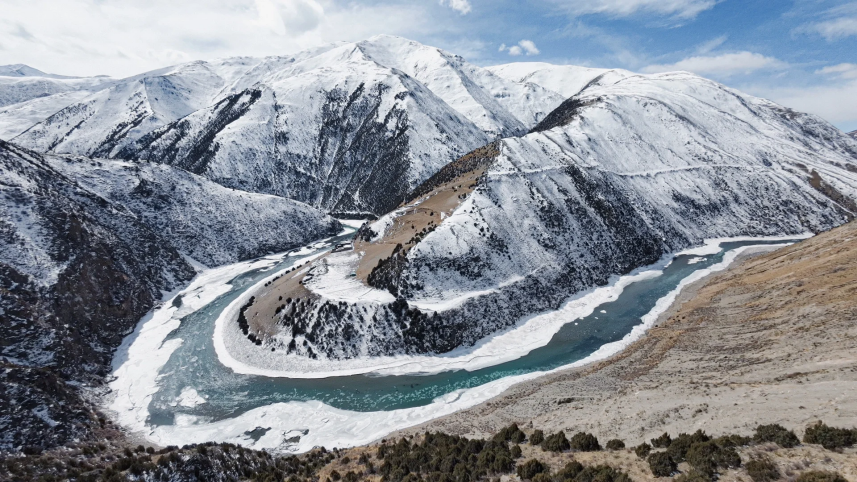
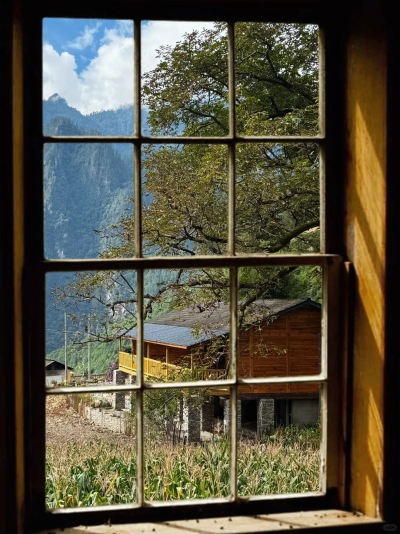
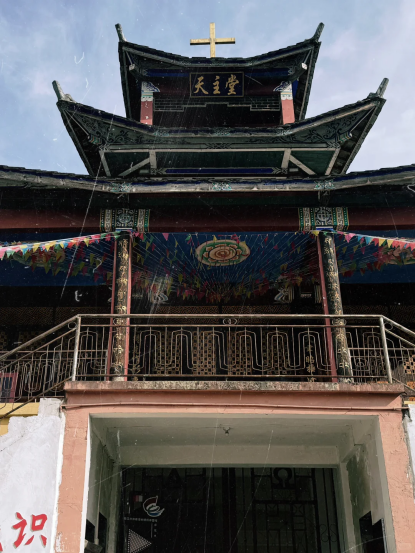
Approaching [Bingzhongluo], look at the Qianli [Nujiang First Bay] and [Autumn Barrel] at the observation deck.
Qiuna Bucket, the "place where man and god live together" hanging at the northern end of the Nu River Grand Canyon and at the junction of Yunnan and Tibet, is a peaceful place of "mountains and rivers" in the Nu language, carrying the thousand-year-old hoof prints of the ancient tea horse road and the epic of the integration of multiple beliefs. As the last village in Yunnan Province to Tibet, it began with the Nu people's residence, and since the 17th century, the Lisu and Tibetan people have moved in one after another, forming a unique pattern of symbiosis of the seven ethnic groups. The Catholic church founded by French missionaries in 1864 (destroyed in conflict and rebuilt in 1905) stands on the fringes of Tibetan Buddhist culture, where Sunday Lisu chants and Tibetan chanting resonate, becoming the northernmost beacon of faith for Catholicism on the Nu River. The wooden houses and slate roofs in the village tell the wisdom of the Nu people - the three-story dry-bar building (the bottom of the livestock pen, the middle of the habitat, and the top floor for drying) is made of mortise and tenon joints without a nail, and the shale tiles are hydrophobic and moisture-proof; The fire pond sacrifice and the stone roof of the "Dragon Patch" echo the awe of nature. It used to be the ancient tea horse road and the ancient tea horse road was dangerous, and the cliff chisel marks were deeply embedded in the memory of the horse gang, and after the opening of the new post road in 1985, the dust and smoke gradually disappeared, and only the stone road was winding like history.
Hike into [Wuli Village]
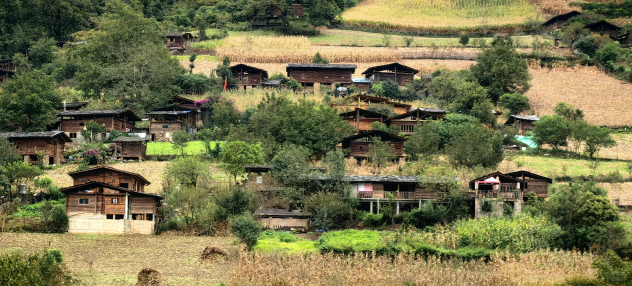
Wuli Village (formerly known as "Wengli", meaning "bird's nest" in Nu language), this ancient settlement suspended on the gentle slope of Biluo Snow Mountain in the Nujiang Grand Canyon in Yunnan Province, is a secret place where the living relics of the ancient tea horse road and multi-ethnic culture coexist. As the core village of Bingzhongluo Town, more than 60 Nu, Lisu and Tibetan villagers guard the ecological wisdom of "living together with man and god": the wooden flute slate houses are scattered along the mountain, the roof is covered with natural refractory stone flakes (the cooking tool of Bingzhongluo slate baba), and the terraced farming and the primeval forest are contrasted.
In front of the village, the 1.5-kilometer thousand-year-old tea horse road is carved into the vertical cliff wall, which was once the only dangerous path for the horse gang to enter Tibet, and the villagers still hike here, and the stone road with mottled hoof prints records the vicissitudes of the salt tea trade, and the lens of Tian Zhuangzhuang's documentary "Drum" has frozen the epic of the horse gang here. Because of the perennial clouds and mist, the smoke curls up from the cooking, it was poetically named "Wuli" by travelers, and its "Swiss pastoral" picture scroll (backed by snow-capped mountains and facing the Nu River) and the cultural label of "Chinese ethnic minority characteristic villages" condensed into a cultural totem of the Nujiang River where "the fireworks of the ancient road have not been extinguished, and the civilization of the border land is the same".
Breakfast, lunch and dinner. Lodging: Dulongjiang.
Bingzhongluo-Dulongjiang (about 4.5 hours by car, about 120.2 kilometers).
After breakfast, we will depart for the mysterious Dulong River.
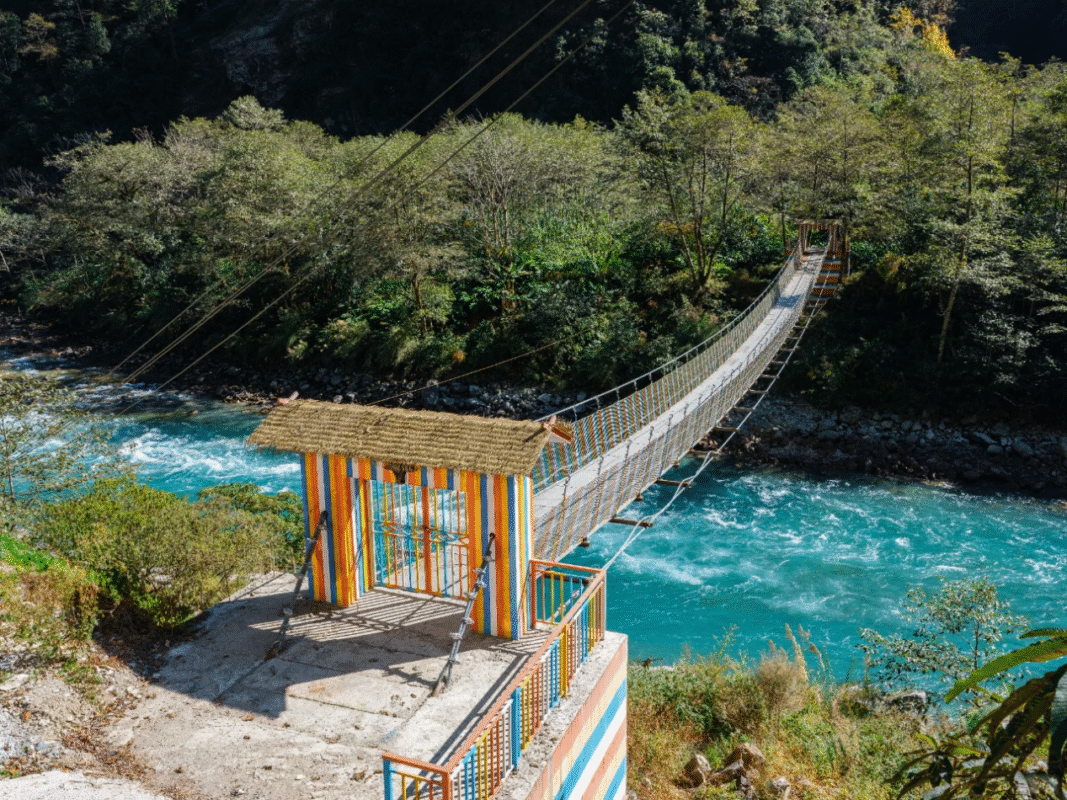
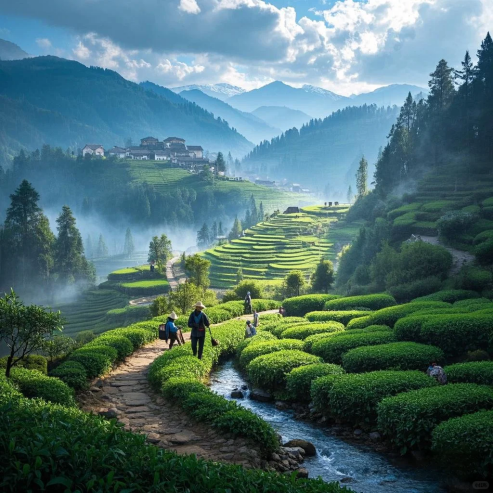
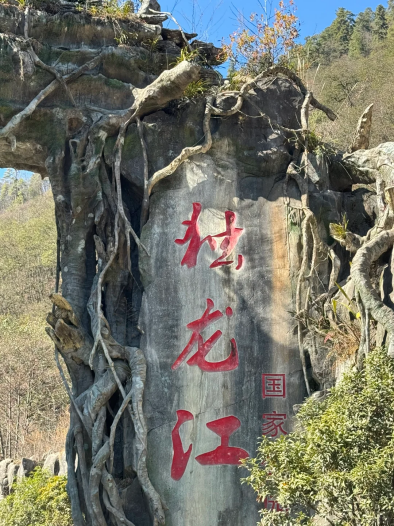
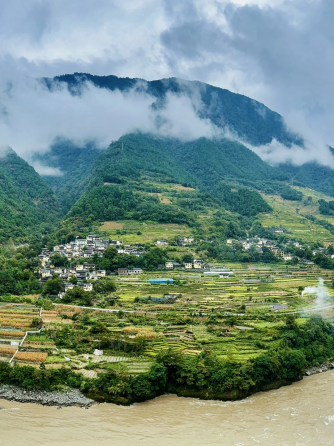
The Dulong River, the "Jade Secret Stream" embedded in the Hengduan Mountains at the junction of Yunnan, Tibet and Myanmar, as the eastern source of the Irrawaddy River, is famous for its most pristine ecological preservation area (93% forest coverage) and the thousand-year-old culture of the Dulong people. The Dulong people lived in the canyon until the 50s of the last century, and were still at the end of the primitive society - slash-and-burn farming, rattan zipline crossing the river, and wild hemp weaving Dulong blanket are the marks of their survival. Historically, the Dulong River was completely isolated from the world due to the double barrier of Gaoligong Mountain and Danlika Mountain, and the mountain was closed by heavy snow for half a year every year; In 1999, the first highway was opened, and in 2014, the tunnel was completed, ending the fate of the thousand-year-old island, and the Dulong clan realized the vicissitudes of "one step across the millennium".
Enjoy along the way: primeval forests, 100 peaks, 1,000 acres of bamboo sea, national first-class protection of Gongshan bald fir, you can overlook Biluo Snow Mountain, Dangdanglika Mountain, Nanmowang Mountain, etc. Dulong River is recognized by experts as a "Natural Museum of Wild Plants", and is one of the most intact areas of China's original ecology, where the ancient and closed ethnic group - Dulong people. We have been going deep along the Dulong River Grand Canyon.
Pass through the [Shenshu Stump Observation Deck], go all the way along the Dulong River to the north, and arrive at [Longyuan Village].
Located in the mountains and valleys at the junction of Yunnan and Tibet, the traditional wooden houses of the Dulong people are scattered among the terraced fields and primeval forests, and the ecological wisdom of "living together with man and god" continues the thousand-year-old livelihood of slash-and-burn farming, gathering, fishing and hunting. The most precious cultural symbol in the village is the Dulong tattooed woman - the indigo butterfly pattern was once a female adult identity totem, and now only a few elders are left to carry the dying "living fossils of human beings".
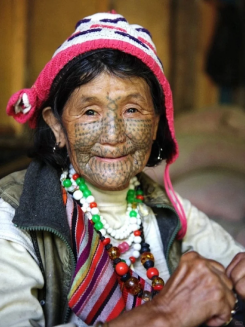
Explore the oldest people, the Dulong people, and look for the mysterious "tattooed girl" of the Dulong people. (Take pictures and tip yourself) tattoo custom has long disappeared, the current living Dulong tattoo women less than 25 people, distributed in different villages in Nujiang Dulongjiang, and the youngest is over 70 years old, Longyuan Village currently only 3 tattooed women, because of limited life, we can not be controlled, if there is a fate to meet, if not, please treat it normally.
Note: There are many opinions about the origin of the tattoo, and to this day, there is no authoritative explanation for the tattoo. There are these three kinds of sayings that are most widely circulated among the people: First, in order to prevent the Tibetan Chawaron Toast from robbing women, girls generally have to get tattoos when they are 12 to 15 years old, and the tattooed women look ugly, and the Chawalong Toast will not come to rob women. The second is the custom of tattooing, which is related to the long-disappeared totem worship of the tribe. The third is that the Dulong people at that time believed that women's tattoos were a symbol of beauty, and girls who did not tattoo their faces could not marry in the future. Nowadays, there is no custom of tattooing in the Dulong River Basin, and many girls do not want to tattoo their faces. It is understood that there are now less than 25 tattooed women of the Dulong clan alive, the oldest of whom is more than 100 years old, and the youngest tattooed woman is also 60 years old. With the passage of time, the ancient and mysterious tattooed woman will eventually disappear into the long river of history.
Breakfast, lunch and dinner. Lodging: Gongshan.
Dulongjiang-Gongshan (about 305 hours, about 80.3 kilometers).
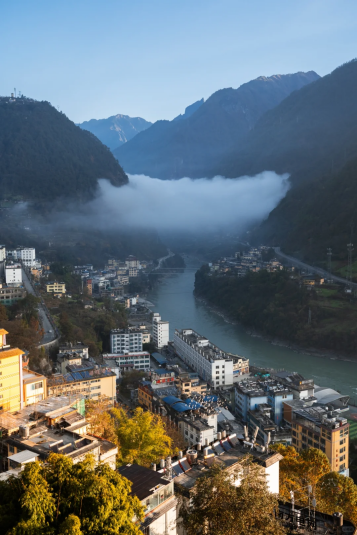
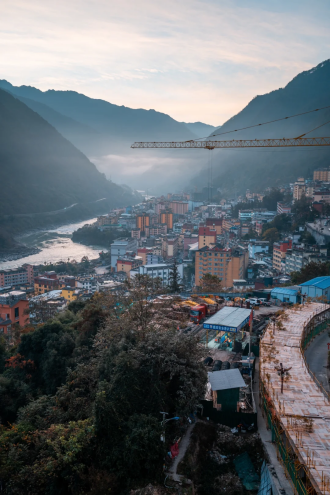
Gongshan Dulong Nu Autonomous County (established in 1956), lying quietly in the northern section of the Nujiang Grand Canyon in northwest Yunnan, is the only Dulong Nu Autonomous County in the country, carrying the "three mountains and two rivers" (Biluo Snow Mountain, Gaoligong Mountain, Dandanlika Mountain, Nu River, Dulong River) of the steep landform and the multi-civilization symbiosis epic. Here, the indigo butterfly pattern of the Dulong tattooed girl gradually withered, but it is still engraved with the primitive belief of the "ancient people"; The flower sacrifice of the Nu "Fairy Festival" and the Lisu chants are intertwined between the Bingzhong Luo Tibetan Buddhist Temple and the Chongding Catholic Church, interpreting the ecological philosophy of "man and god living together".
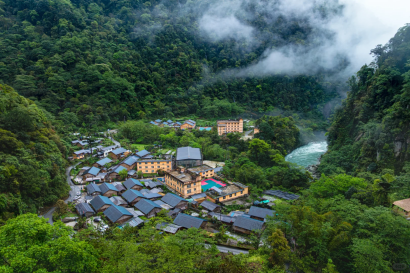
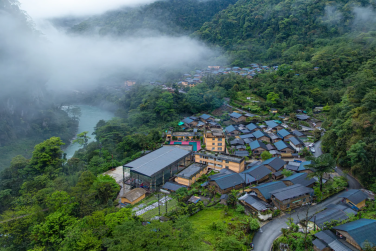
After breakfast, go to the lower reaches of the Dulong River [Maku], which is the Guomen village that is pressed on the border at the end of the village, and the Burmese people living on the border often come out to catch the market here, and the Dulong River also enters Myanmar from here. Along the way, enjoy the Dulong River Gorge and the pristine scenery, passing through the [Pukawang River], where the water is clear, like flowing turquoise jade. After that, there is no specific scenic spot in the Dulong River, and there are beautiful scenery all the way, which makes you dizzy. We will also go to the border to look for the [No. 41 Boundary Monument], and if the weather is good, we will hike to the "Ha Po Waterfall", which is known as the "Ha Po Waterfall" that flows down from the moon, which is said to be one of the most beautiful waterfalls in the Nu River. Leave [Dulongjiang] at the right time and go to [Gongshan] to check in.
After breakfast, go to Lushui from Gongshan, stop at the observation deck along the way, you can enjoy the [Jiangzhong Pine] on a rock in the middle of the river on the west bank of the Nujiang River, there is a Yunnan pine that can not be estimated in age, the tree is about 4 meters high, the root soil and fertility are less, it does not dry up and grow all year round, it is evergreen all year round, it has stood proudly on the rocks in the Nujiang River for hundreds of years, [Stone Moon] is on the peak of 3300 meters in the middle of the Gaoligong Mountain Range, there is a huge marble dissolution through the hole, the hole is 100 meters deep, the hole is about 40 meters wide, and the height is about 60 meters. Along the Nu River to the north, hundreds of miles away, you can see this stone cave with white clouds and blue sky, it has a nice name, called Stone Moon.
【Renma Suspension Bridge】
The Nujiang Grand Canyon and the Biluo Snow Mountain and Gaoligong Mountain on both sides of the river are stacked on top of each other, and the dangerous rocks are towering. Since ancient times, the traffic here has been very inconvenient, as the so-called "rock sheep have no way to go, monkeys are also worried". There are only a few slower ferries on the Nu River that can be ferried by wooden boats, so there are still many suspension bridges on the Nu River. [Lisu Village], etc., shooting [Bath Pond Meeting Site] There are many desirable natural hot springs in Nujiang Prefecture. Every year from the second day of the Spring Festival to the sixth day of the Spring Festival, the Lisu people living nearby bring their children and daughters to the hot springs to take a bath. Wash away the hard work of the year, wash the New Year's Kangshun. At the bathhouse party, there will also be duets by Lisu singers and various folk sports activities. Arrive in Lushui and check in to the hotel for rest.
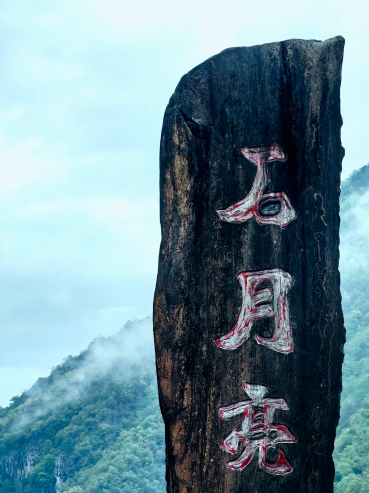
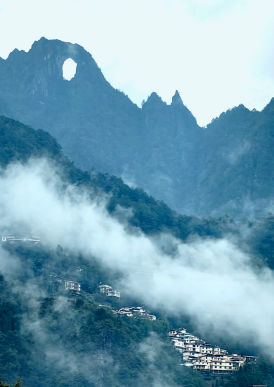
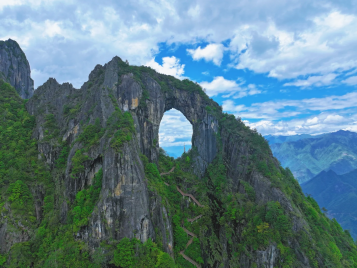
After breakfast, go to Lushui from Gongshan, stop at the observation deck along the way, you can enjoy the [Jiangzhong Pine] on a rock in the middle of the river on the west bank of the Nujiang River, there is a Yunnan pine that can not be estimated in age, the tree is about 4 meters high, the root soil and fertility are less, it does not dry up and grow all year round, it is evergreen all year round, it has stood proudly on the rocks in the Nujiang River for hundreds of years, [Stone Moon] is on the peak of 3300 meters in the middle of the Gaoligong Mountain Range, there is a huge marble dissolution through the hole, the hole is 100 meters deep, the hole is about 40 meters wide, and the height is about 60 meters. Along the Nu River to the north, hundreds of miles away, you can see this stone cave with white clouds and blue sky, it has a nice name, called Stone Moon.
【Renma Suspension Bridge】The Nujiang Grand Canyon and the Biluo Snow Mountain and Gaoligong Mountain on both sides of the river are stacked on top of each other, and the dangerous rocks are towering. Since ancient times, the traffic here has been very inconvenient, as the so-called "rock sheep have no way to go, monkeys are also worried". There are only a few slower ferries on the Nu River that can be ferried by wooden boats, so there are still many suspension bridges on the Nu River. [Lisu Village], etc., shooting [Bath Pond Meeting Site] There are many desirable natural hot springs in Nujiang Prefecture. Every year from the second day of the Spring Festival to the sixth day of the Spring Festival, the Lisu people living nearby bring their children and daughters to the hot springs to take a bath. Wash away the hard work of the year, wash the New Year's Kangshun. At the bathhouse party, there will also be duets by Lisu singers and various folk sports activities. Arrive in Lushui and check in to the hotel for rest.
After breakfast, drive back to Dali, after arrival, visit [Puzhen Tie-Dye Museum] (visit experience): the basic theme of the museum is: "Inheritance of tie-dyeing skills, continuation of national culture", the whole exhibition is composed of "Tie-dye Origin", "Tie-Dye Family", "Treasures Display", "Flowers", "Dazzling", "Puzhen Dyeing Workshop and Living Interpretation" and other chapters. It is also a demonstration base for tie-dye science popularization in Dali City. Experience and learn Bai tie-dyeing, personally select patterns, print templates, tie flowers, dip dyeing, remove flowers, dry, and take away a copy of your own tie-dye works. Visit [Xizhou Ancient Town]: Xizhou Ancient Town, Dali, located in the north of Dali City, Yunnan Province, is an ancient town with rich historical and cultural heritage. The ancient town of Xizhou was founded in the Nanzhao period and has a history of thousands of years. It retains a large number of traditional buildings and culture of the Bai nationality and is one of the representatives of the Bai culture. There are hundreds of Bai residential buildings with different characteristics in the town, "three squares and one wall", "four in five patios", in which it is like walking into a museum of residential architecture. Walking through this huge "museum", the atmosphere of history and culture is blowing in the face; And the tie-dye shops along the street, the triangular plum that emerges from the wall, the fragrant Xizhou Baba, and the children chasing and playing on the street corner...... It also adds an idyllic life atmosphere to this "museum", and has become a "poetry and distance" in the minds of many tourists.
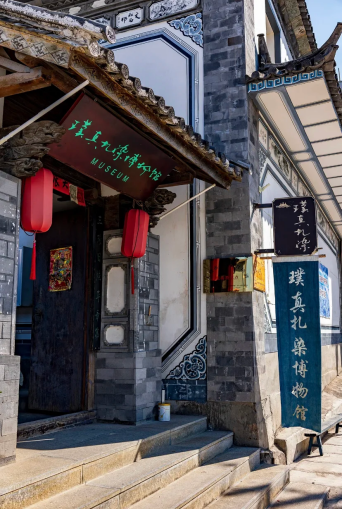
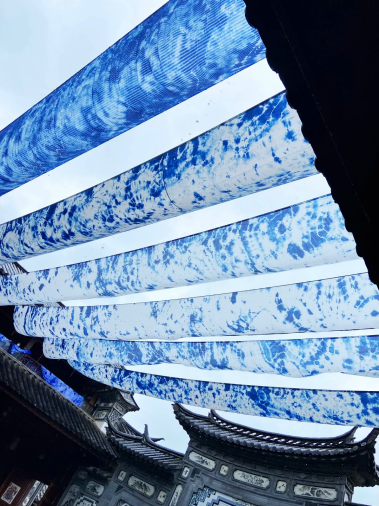
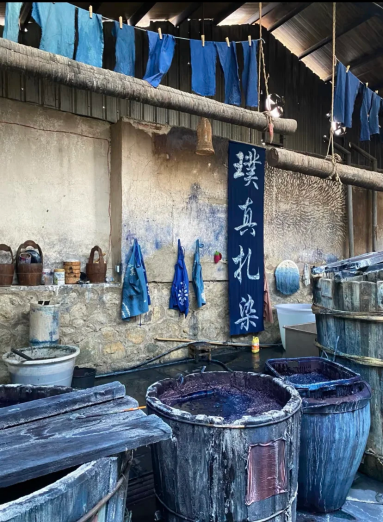
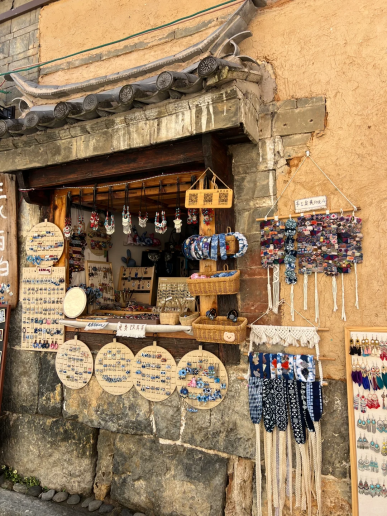
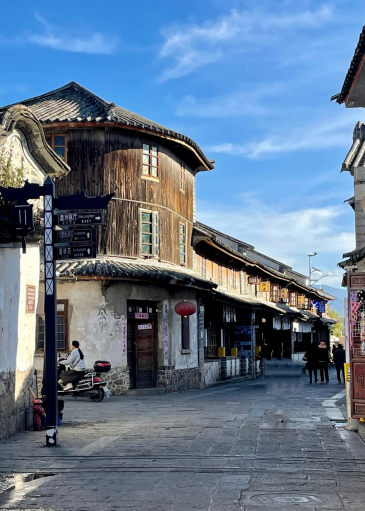
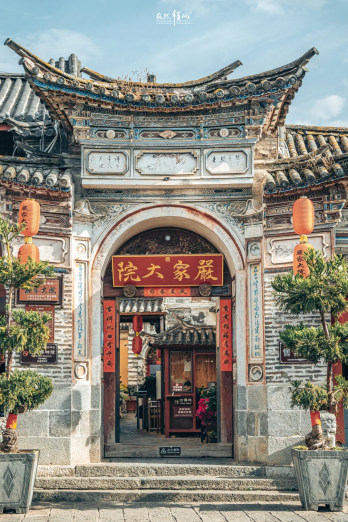
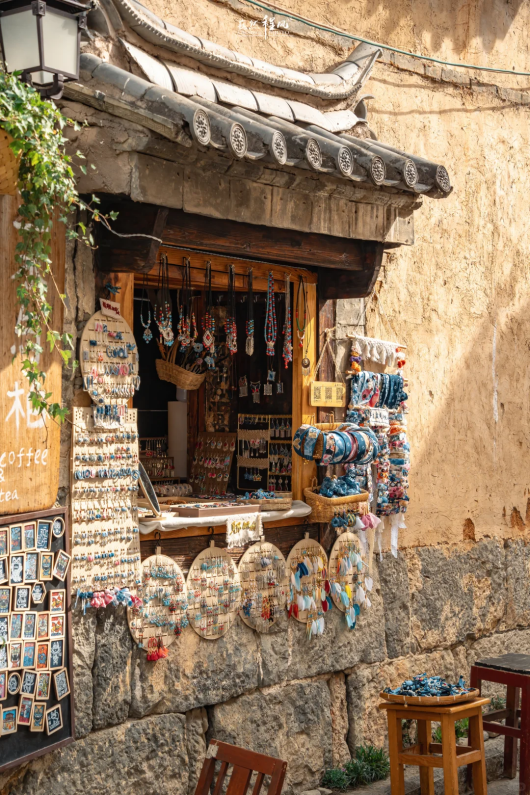
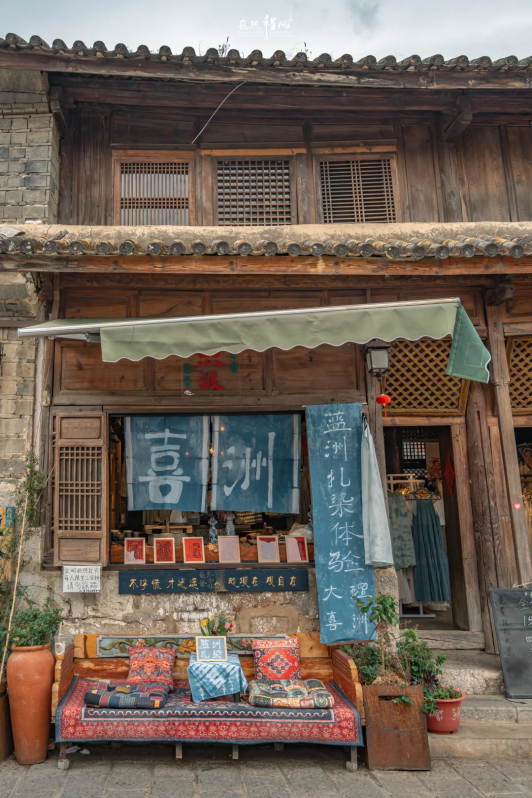
After breakfast, visit the ancient city of Dali and the Foreigner Street, the ancient city of Dali is located on the shore of Erhai Lake, under the Cangshan Mountain, forming an urban pattern of "a water surrounds Cangshan, and Cangshan embraces the ancient city". In the ancient city, you can enjoy the rippling blue waves of Erhai Lake, the clouds and mist of Cangshan Mountain, and you can also see the nineteen snow peaks on Cangshan Mountain on a sunny day. The ancient city of Dali is one of the places where the Bai people live, and it is also a place where multi-ethnic cultures are blended and developed. Here, you can experience the traditional crafts of the Bai nationality such as folk house painting, tie-dyeing, wood carving, and milk fan, taste the Bai people's three-course tea, sauerkraut fish, milk fan and other special foods, and enjoy the Bai people's cave scripture music, the main faith, the wind and snow moon and other folk customs. Here, you can also feel the collision and exchange of Central Plains culture, foreign culture and local culture, forming a splendid Nanzhao Dali culture and distinctive Bai culture. After lunch, drive back to Kunming and check in to the hotel for rest.
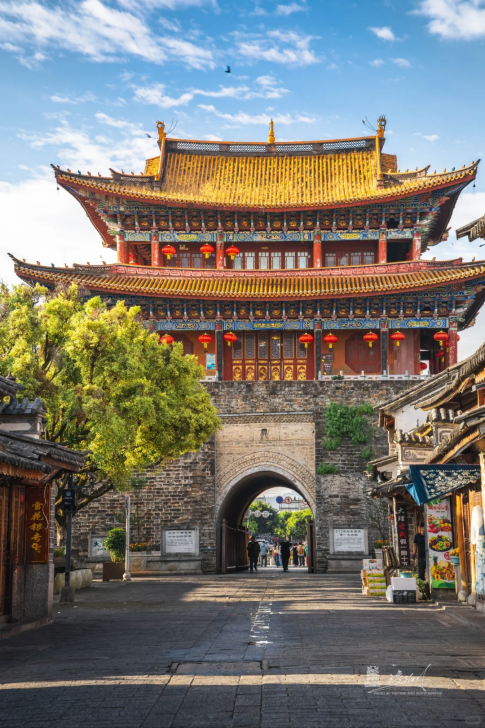
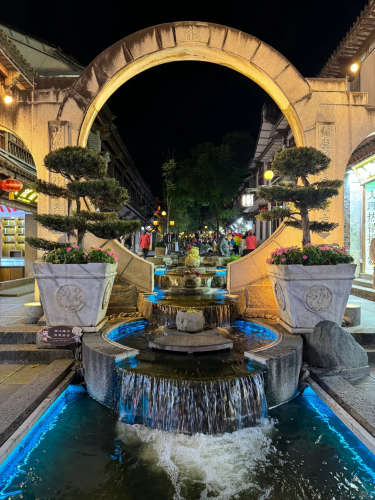
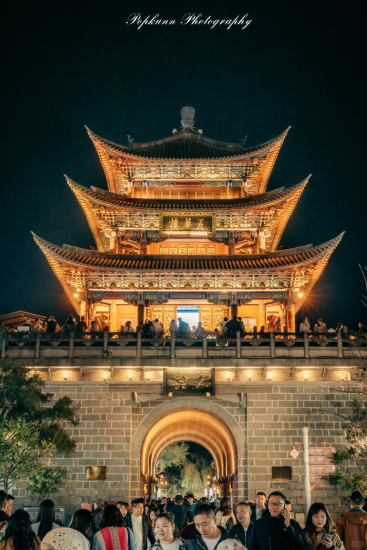
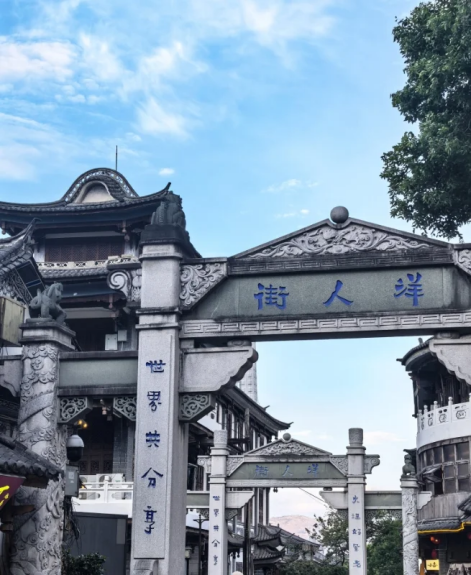
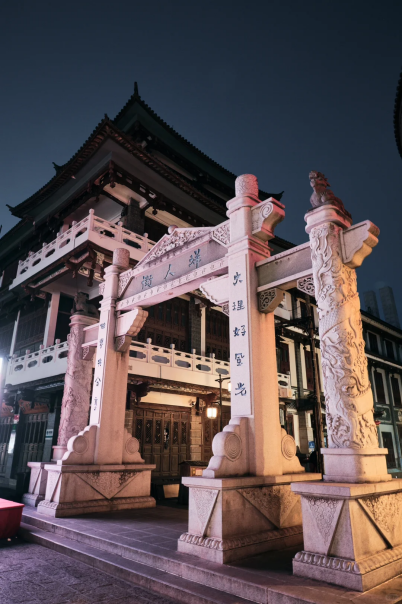
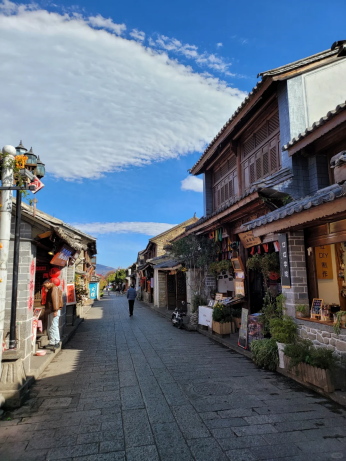
After breakfast, visit the Grand View Building, a wooden structure building with triple eaves and glazed corners. In the 35th year of the Kangxi reign of the Qing Dynasty (1696), a two-story building was built. During the Qianlong period, Sun Weng wrote a long couplet for it, which was written and engraved by the celebrity Lu Shutang, and the Daguanlou became a famous building in China because of the long couplet. After that, we will go to the largest flower trading market in Yunnan [Flower Market], and then send the VIPs to the airport and take the flight back to their warm home.
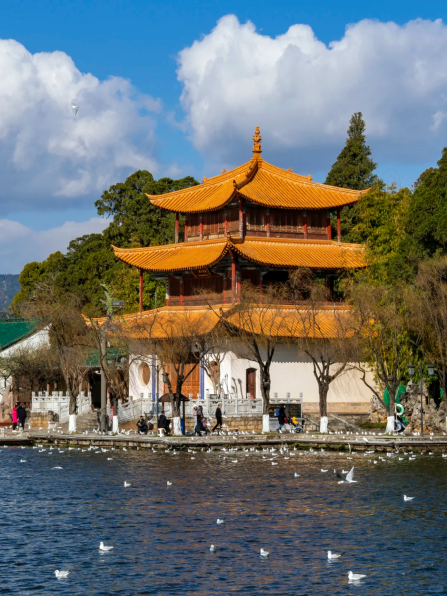
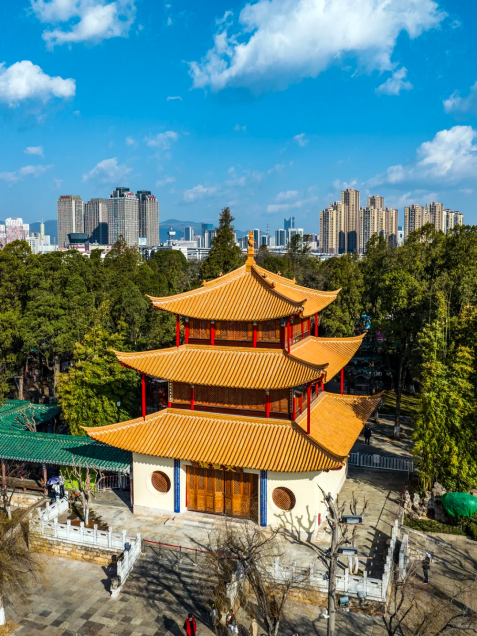
Includes/Excludes
Cost Includes
- Tickets: including the first ticket listed in the whole scenic spot (the small traffic ropeway battery car in the scenic spot is voluntary at your own expense)
- Accommodation: Standard room in a star-rated hotel, with hot water and breakfast, and a single room difference is at your own expense
- Meals: The whole process includes 10 breakfasts and 16 dinners, the meal standard is 80 yuan/person, and the hotel includes two breakfasts (no bed does not include breakfast)
- Car: The whole process of air-conditioned tour bus, to ensure that one person and one seat
- Guided tour: Chinese tour guide service
- Insurance: Combination Insurance, Travel Accident Insurance
- Note: If the above fees are waived due to the guest's own reasons, the fee will not be refunded, please understand
Cost Excludes
- Personal expenses: such as buying souvenirs.
- International flights and visas: not included.
- Other expenses: any expenses not explicitly mentioned in "Price includes".
Addtional Notes
Please pay attention to the local weather forecast before leaving the group, Yunnan is located in the Yunnan-Guizhou Plateau, the local temperature difference between day and night is large, please bring enough warm and cold clothing, Yunnan has strong sunshine and strong ultraviolet rays. If you are outdoors for a long time, please wear a sun hat, sunglasses, and apply sunscreen to protect your skin. The weather can be unpredictable, so please bring rain gear.
Yunnan has high mountains and large slopes, and there are strict regulations on speed limits. The altitude of the itinerary is high, and the oxygen content of the air is low, so the speed of the tourist car is sometimes only 20 -30 miles when going uphill.
Yunnan is an ethnic minority area, please respect the religion and living customs of the local ethnic minorities.
The air conditioners of local hotels with central air conditioning in Yunnan are open regularly, please forgive me!
Travel essentials: raincoat or umbrella, sports shoes, cold medicine, gastrointestinal medicine, insect repellent plaster, sunscreen, sun hat, sunglasses, etc. (The temperature difference between morning and evening is large, please bring slightly thicker clothes.) It is recommended to bring a sweater, a long-sleeved shirt, a light warm jacket, and travel shoes).
Due to weather conditions or irresistible human factors, the activity party has the right to temporarily adjust the order of the activity schedule and tour without affecting the tour.
- Best Price Guaranteed
- No Booking Fees
- Professional Local Guide
-
Vehicle
-
Kunming
-
Kunming
-
English
Related trips you might interested in
Hong Kong Huafang Culture & Technology Co., Ltd.
A Deep Travel Guide to Help the World Perceive China, Embarking on a Cultural Exploration Journey.


